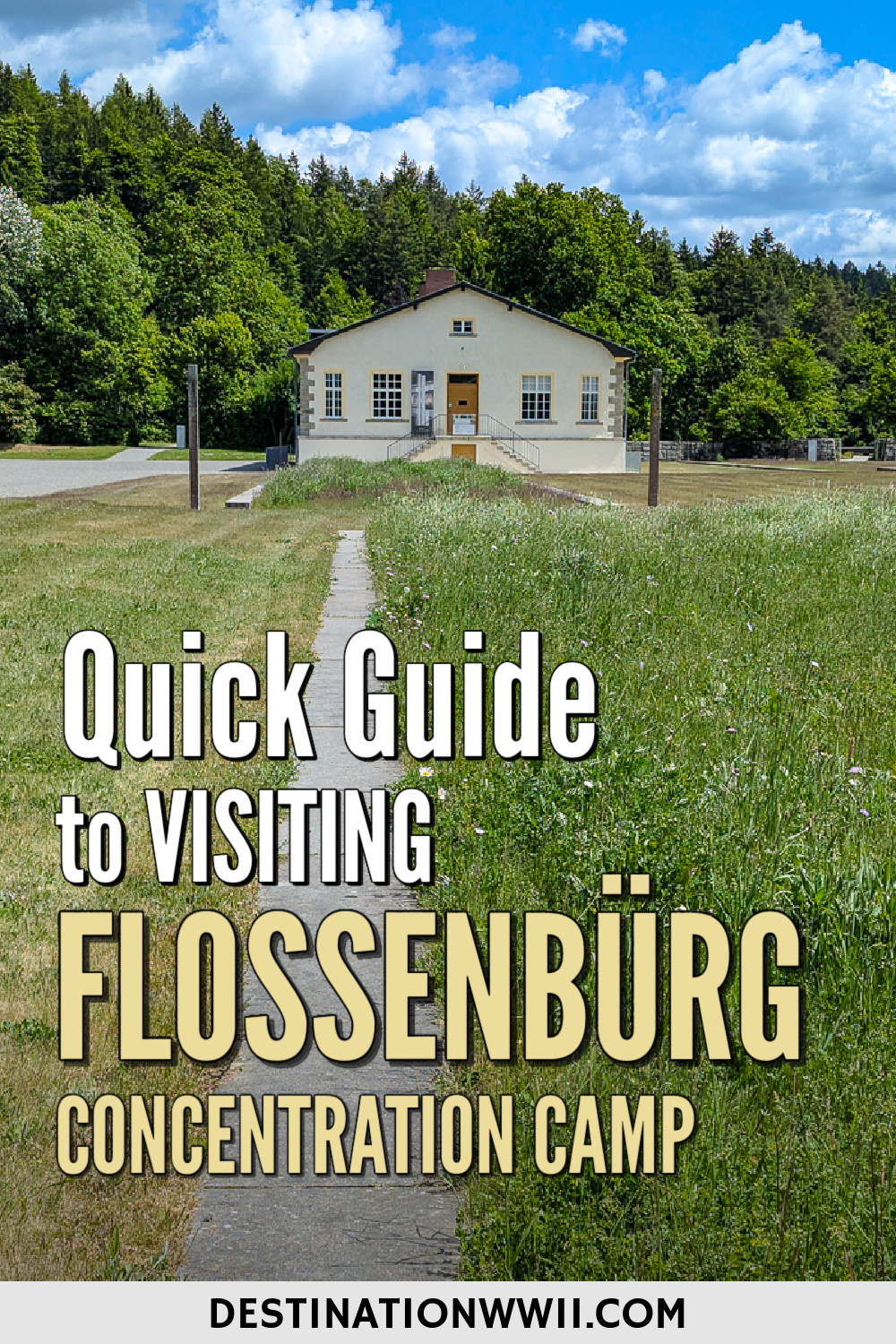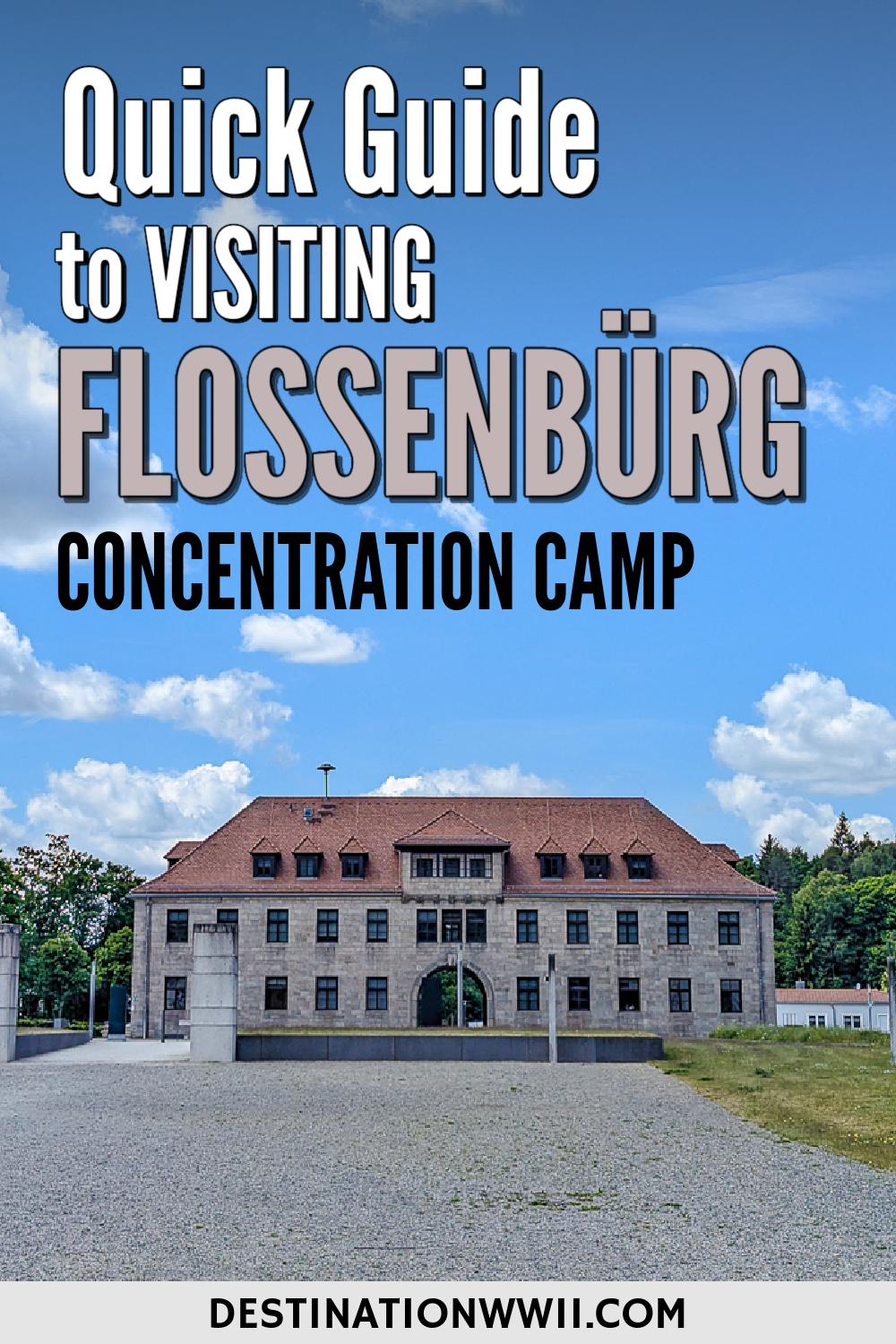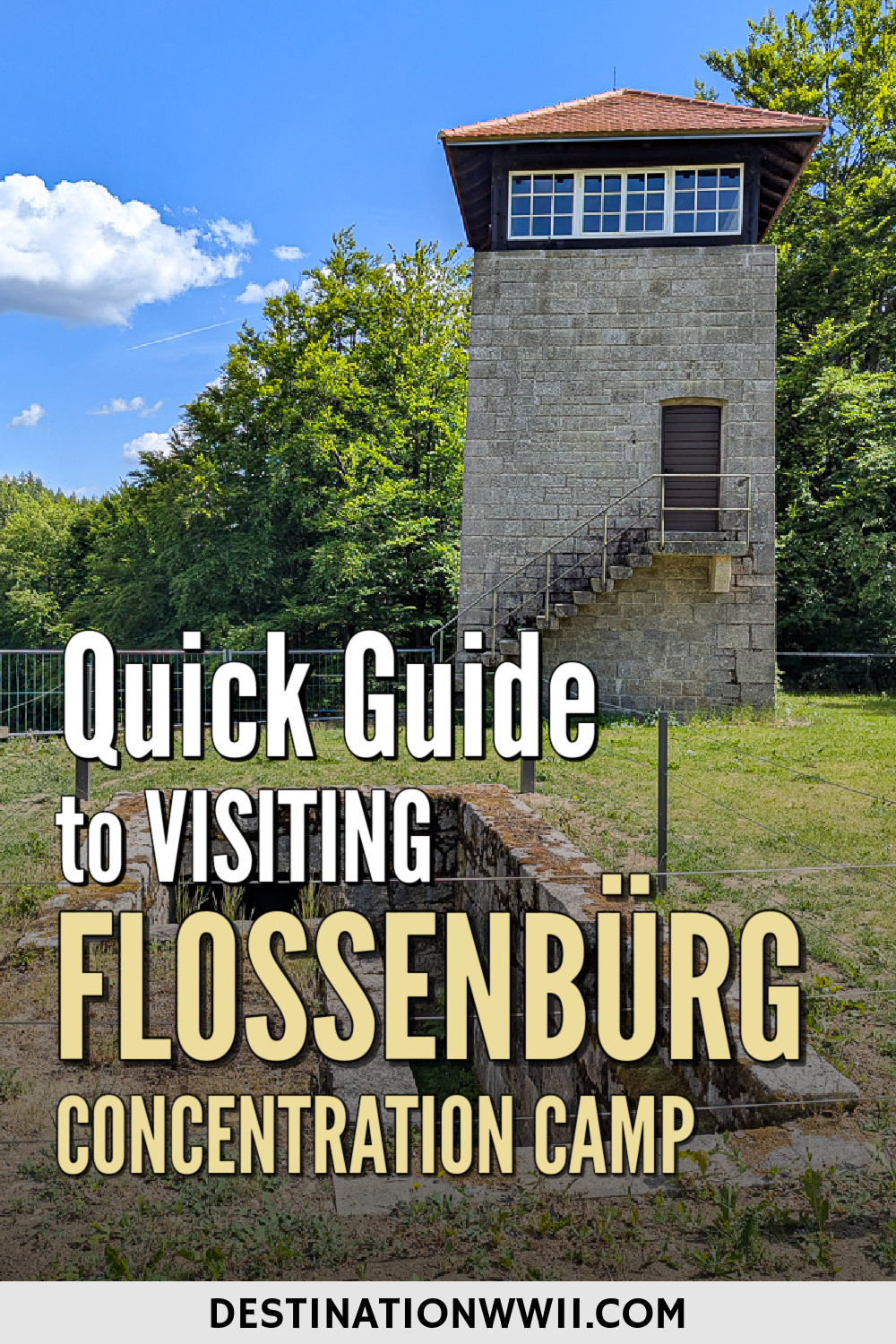Even if you’ve visited other concentration camps before, there’s a good chance visiting Flossenbürg will stand out among the rest. Before my visit, I’d been to ten other such former camps and still found visiting Flossenbürg to be a totally unique experience.
This quick guide will tell you everything you need to know in order to plan your own visit to the Flossenbürg Concentration Camp Memorial in Germany. It may not be close to any major cities but it’s definitely worth the trip.
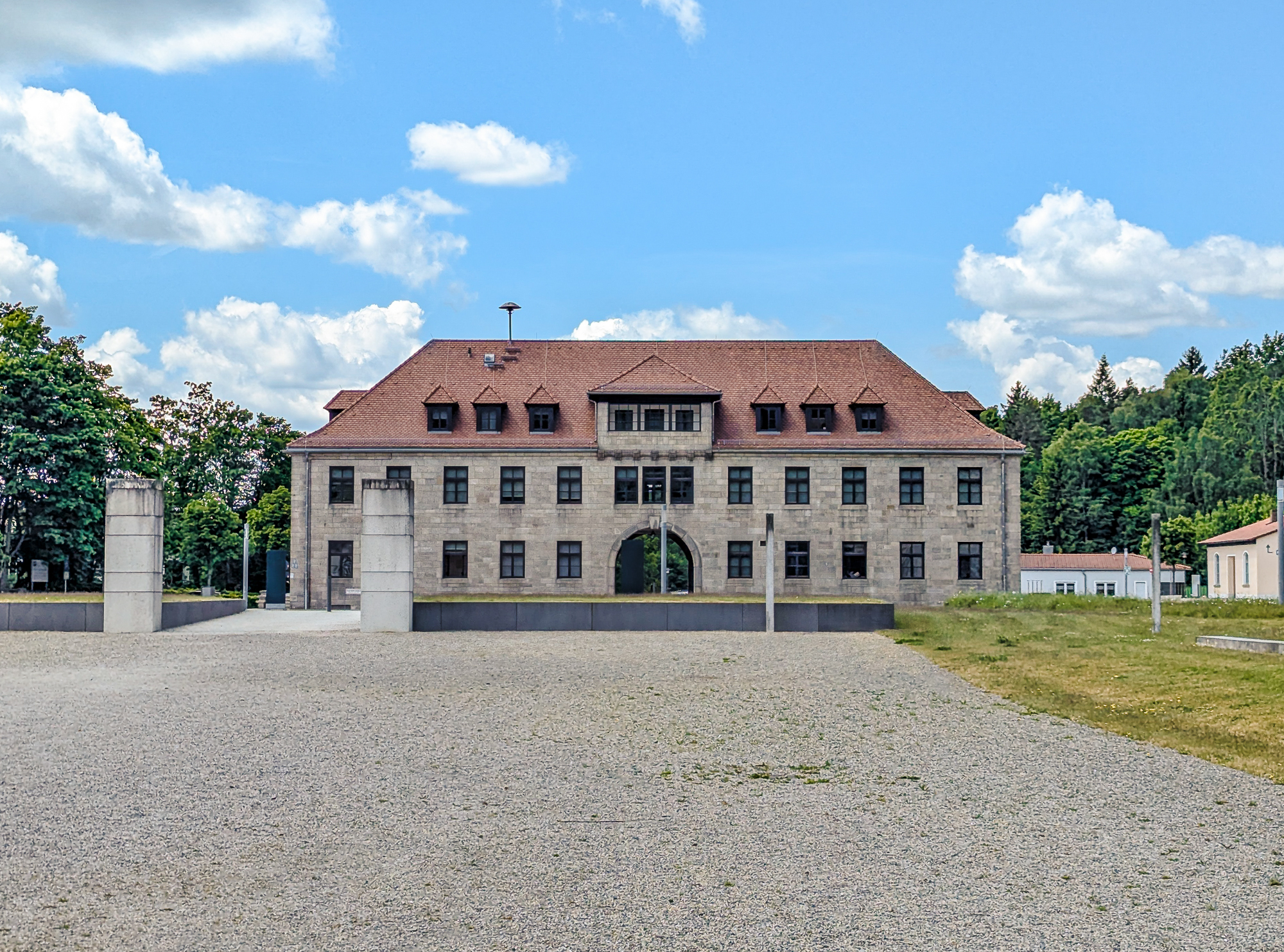
What is Flossenbürg?
Flossenbürg was a Nazi concentration camp established in May 1938 at the site of some already well-established granite quarries in eastern Germany. Even though concentration camps had originally been built for the purpose of imprisoning political opponents, by 1938 they had taken on a new aim–to exploit prison labor for profit. And Flossenbürg was a prime example of that.
As the official history puts it: “Prisoners were put to work in SS-owned economic enterprises for the production of building materials. To this end, the SS founded new camps, and deported ever larger numbers of people to the camps.” In the case of Flossenbürg, that meant the backbreaking work of excavating granite for the German Earth and Stone Works, an SS company.
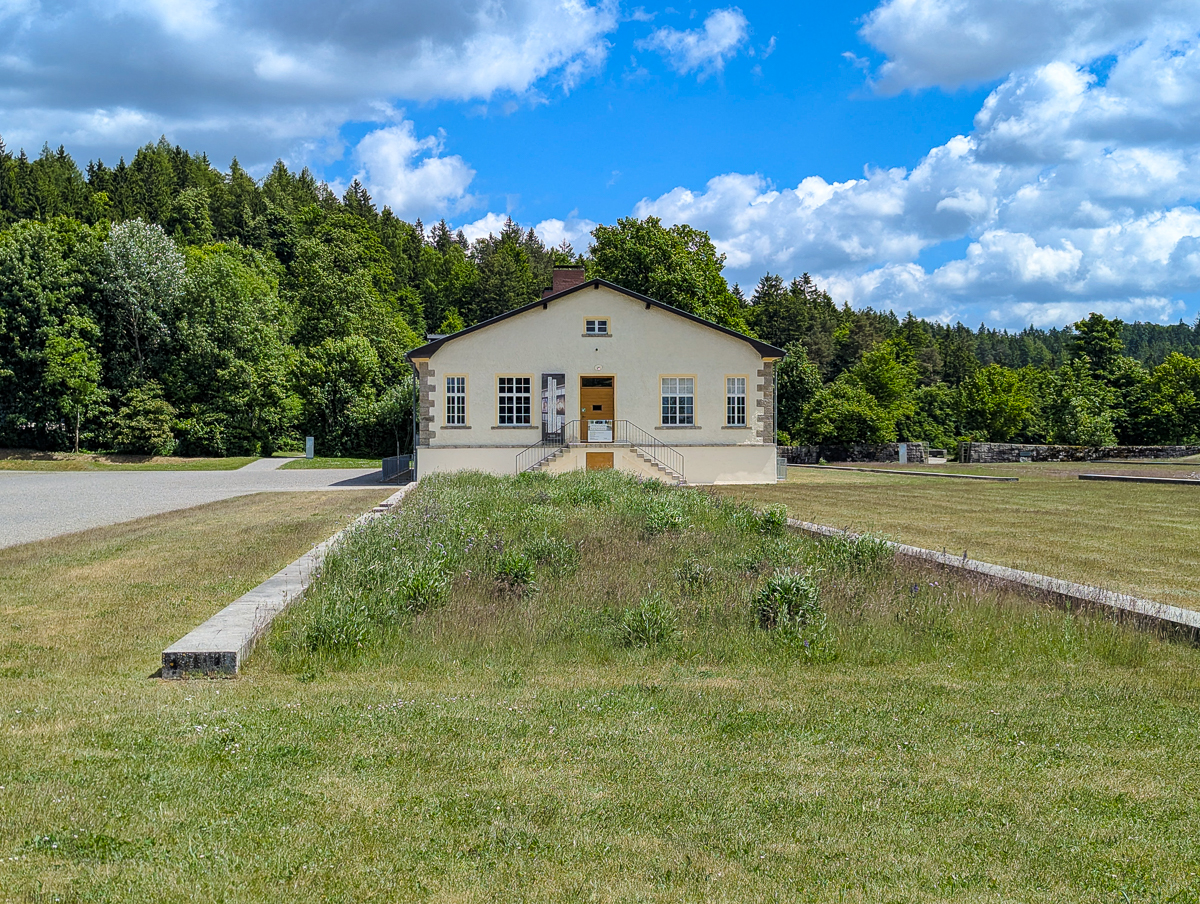
Flossenbürg as a slave labor camp
Flossenbürg’s prisoners were forced to work in the quarries—hauling heavy rocks, pushing wagons, moving soil, and more—without adequate clothing, footwear, food, or rest. Day and night, twelve hours at a time, no matter the weather or temperature.
At the end of the shift, the prisoners then hauled the bodies of those who didn’t survive the day back to the camp. If the prisoners didn’t die from work-related exhaustion, they just as often faced starvation, torture, random violence, and systematic executions.
Once prisoners became too worn down to continue work in the quarries, they were often sent to extermination camps in Poland like Auschwitz and Majdanek. Some particularly ill prisoners were sent to the euthanasia center at Hartheim Castle in Austria. Women unable to work were sent to Ravensbrück–the notorious women’s concentration camp in northern Germany.
Flossenbürg Concentration Camp operated from May 1938 until April 1945 when the US Army liberated the camp. In that time, 100,000 people had been imprisoned here and at least 30,000 died here. Flossenbürg’s prisoners included political opponents of the Nazi regime, Jews, Polish citizens, resistance members, foreign forced laborers, Soviet POWs, and many others.
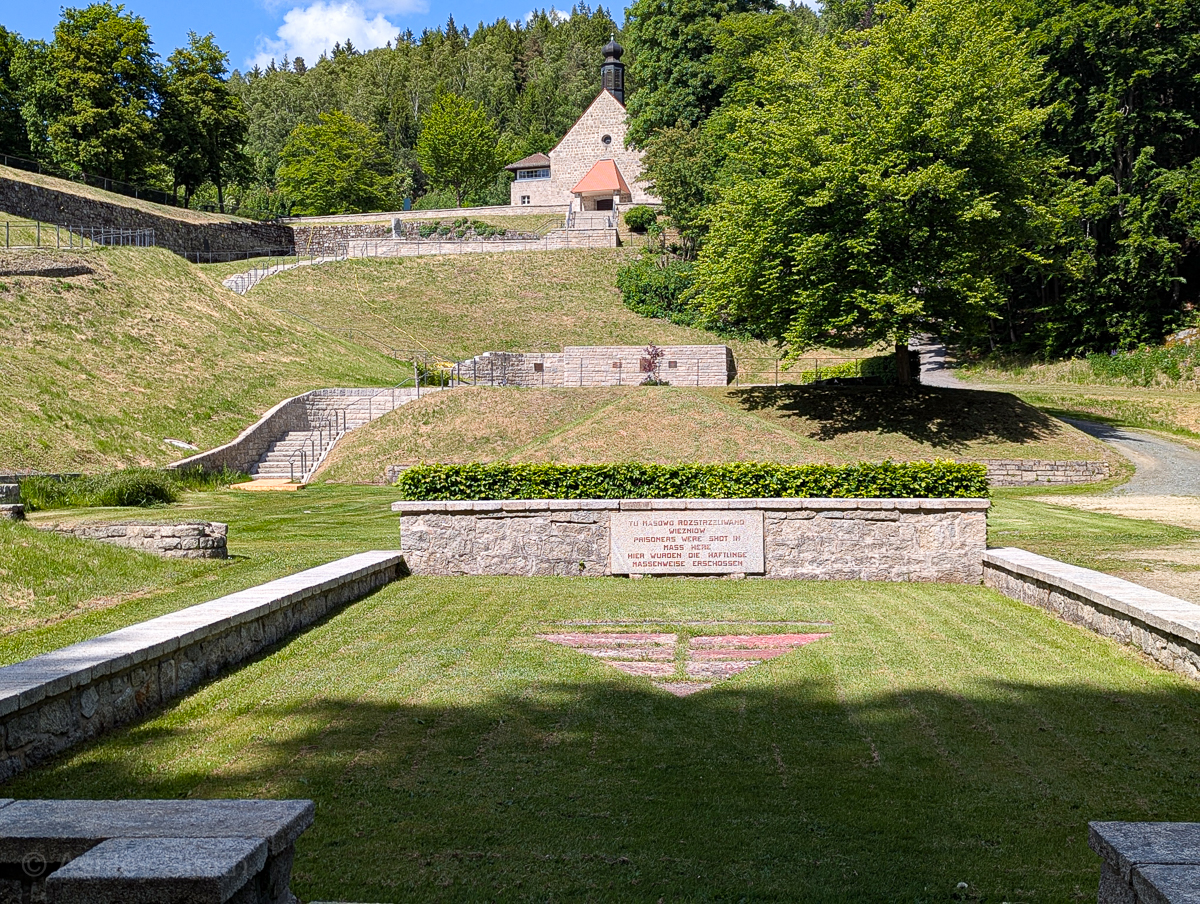
Flossenbürg’s liberators
The US Army’s 90th Infantry Division liberated Flossenbürg on April 23, 1945. After landing at Utah Beach during the Normandy invasion, this division continued on through France, into Belgium where it fought in the Battle of the Bulge, then all the way across Germany to Flossenbürg. The monument to the 90th Infantry Division at Utah Beach was constructed using granite from the Flossenbürg quarry.
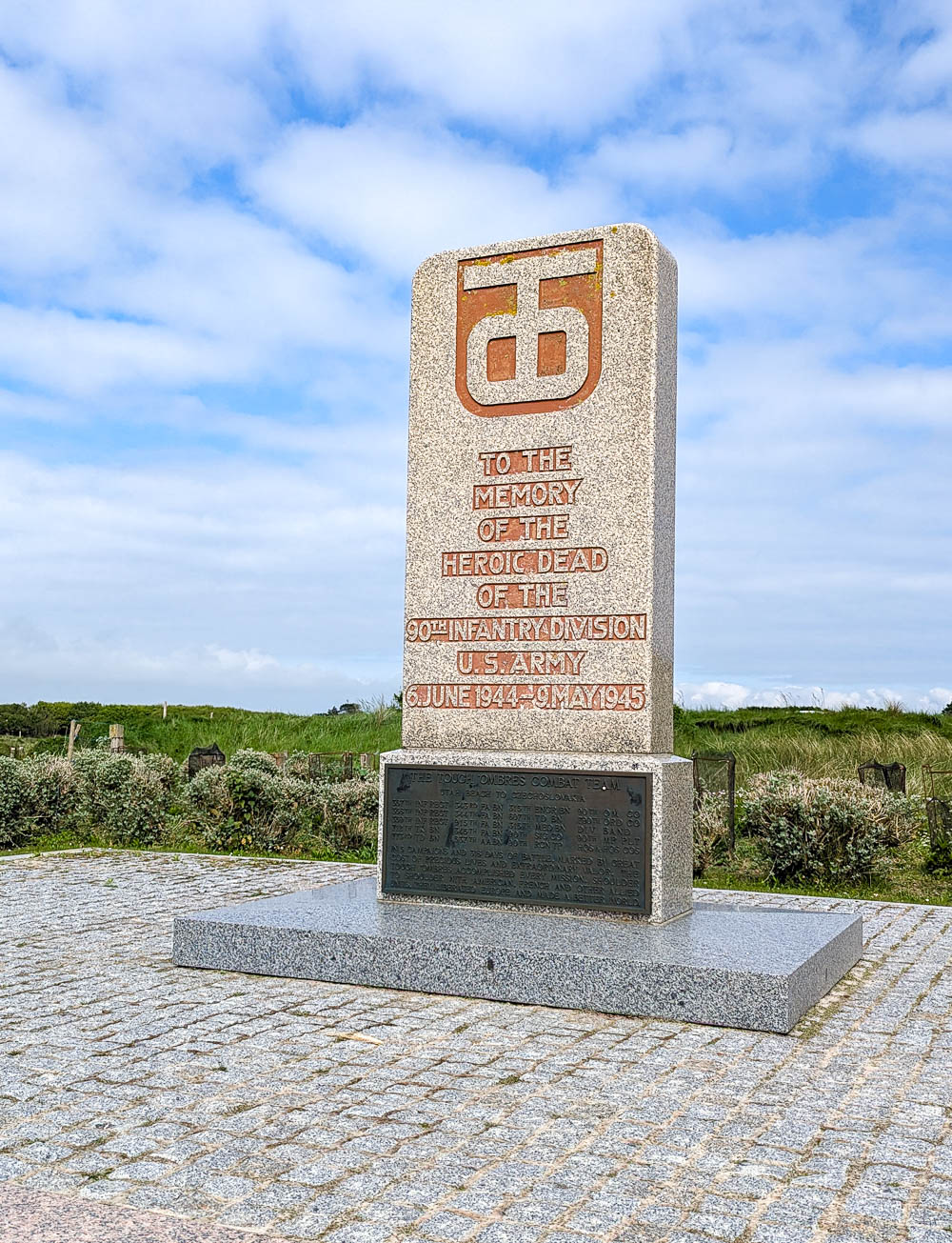
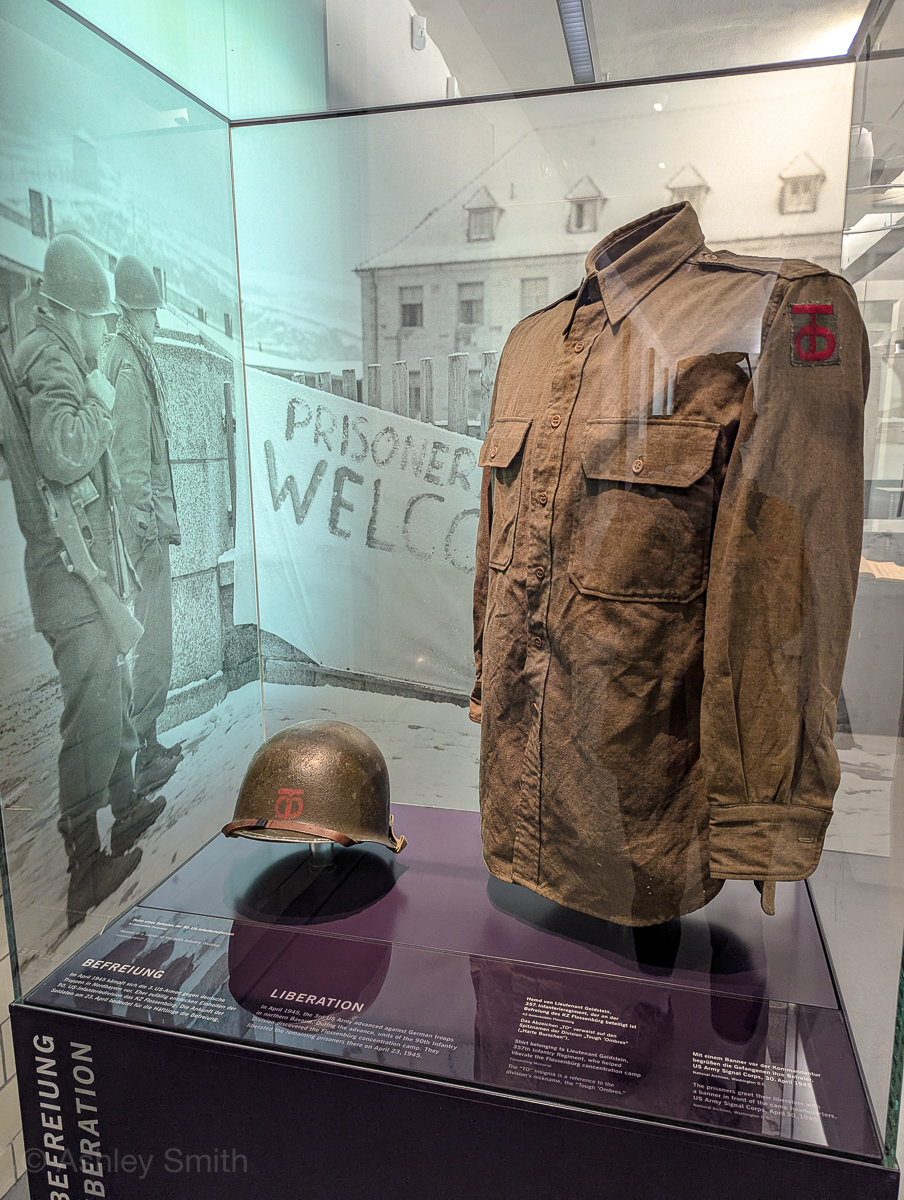
Flossenbürg today
After the war, a housing development was constructed on the grounds of the camp. (One of the first things you’ll notice when visiting Flossenbürg is how the nearby homes come right up to the memorial site.) The map under the arch of the main building shows how far it used to extend. The remains of the rest of the camp were essentially neglected. It wasn’t until the fall of the Soviet Union and the reunification of Germany (1989) that an interest in its Nazi past started to grow.
The first memorial space at Flossenbürg opened in 1995. Today, several of the camp’s original buildings still stand and they house some really well-done museum-style exhibits on the camp’s history. You can visit many beautiful memorial spaces as well as the chapel, the crematorium, and the building that housed the SS canteen.
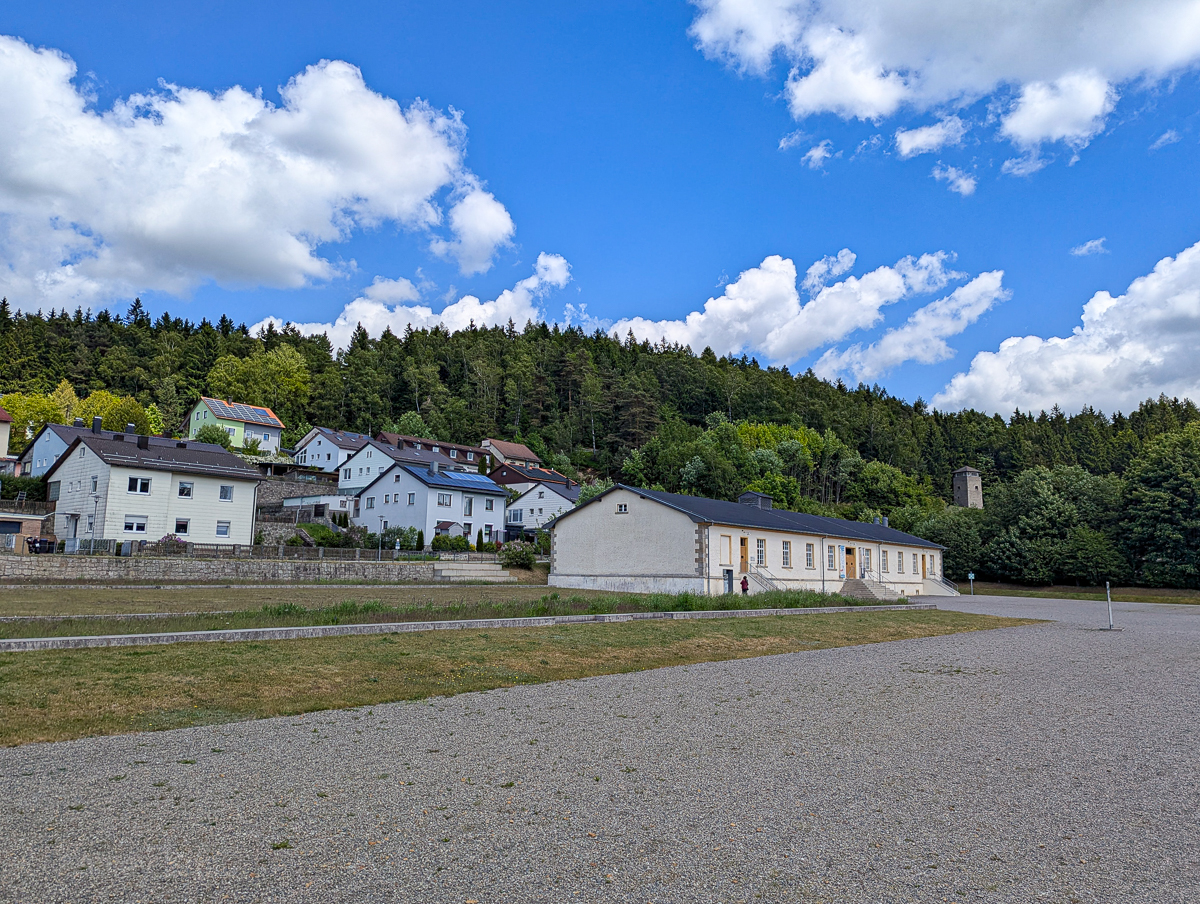
Flossenbürg Castle Ruins
One thing you’ll notice immediately upon arriving are the ruins of an ancient castle up on a hill overlooking the camp. You’ll see these ruins in several of the historical photos here as well. These are the ruins of Flossenbürg Castle which dates back almost a thousand years and was owned by Friedrich Barbarossa, the former Holy Roman Emperor.
These ruins are known locally as Die Burg (the castle) or Burgruine (castle ruins). The ruins are open to the public and you can visit any time you want. The climb takes about 15 minutes.
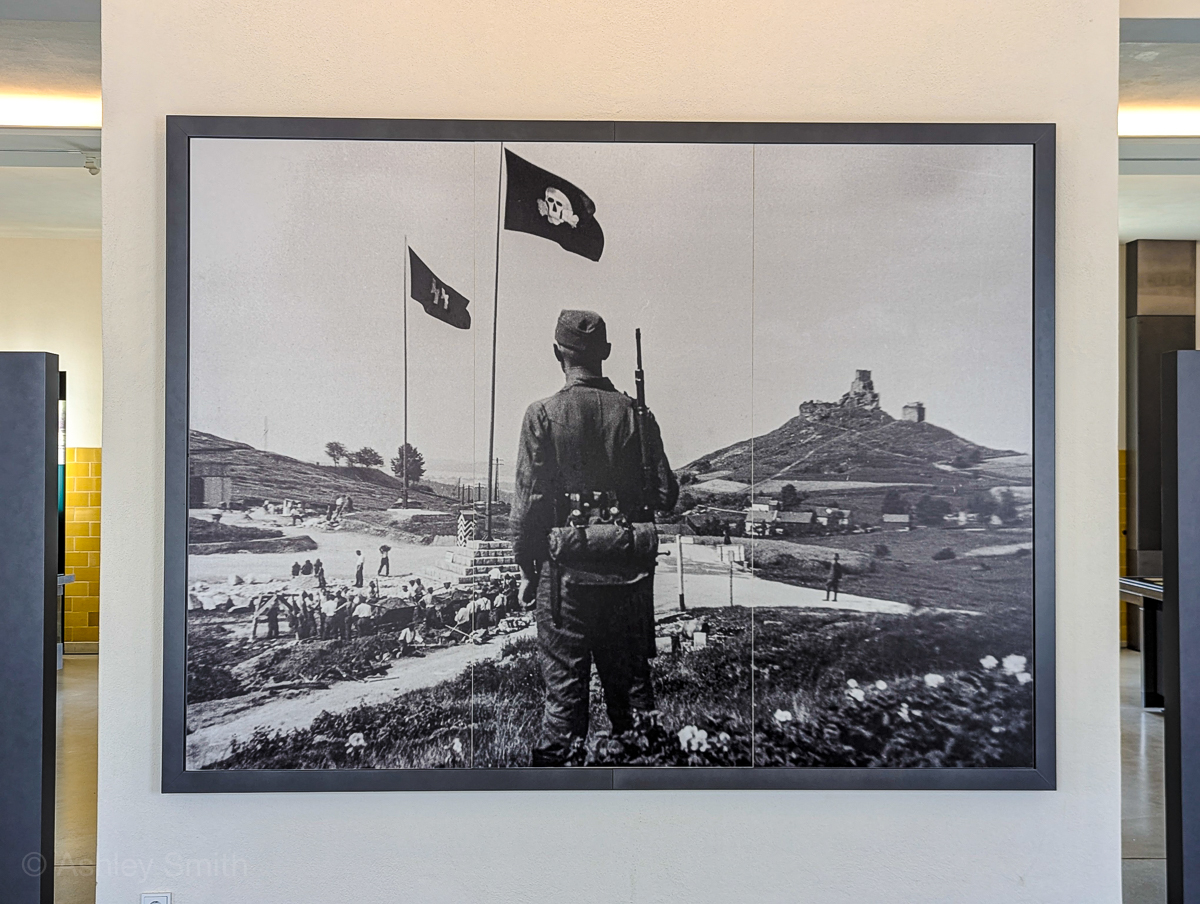
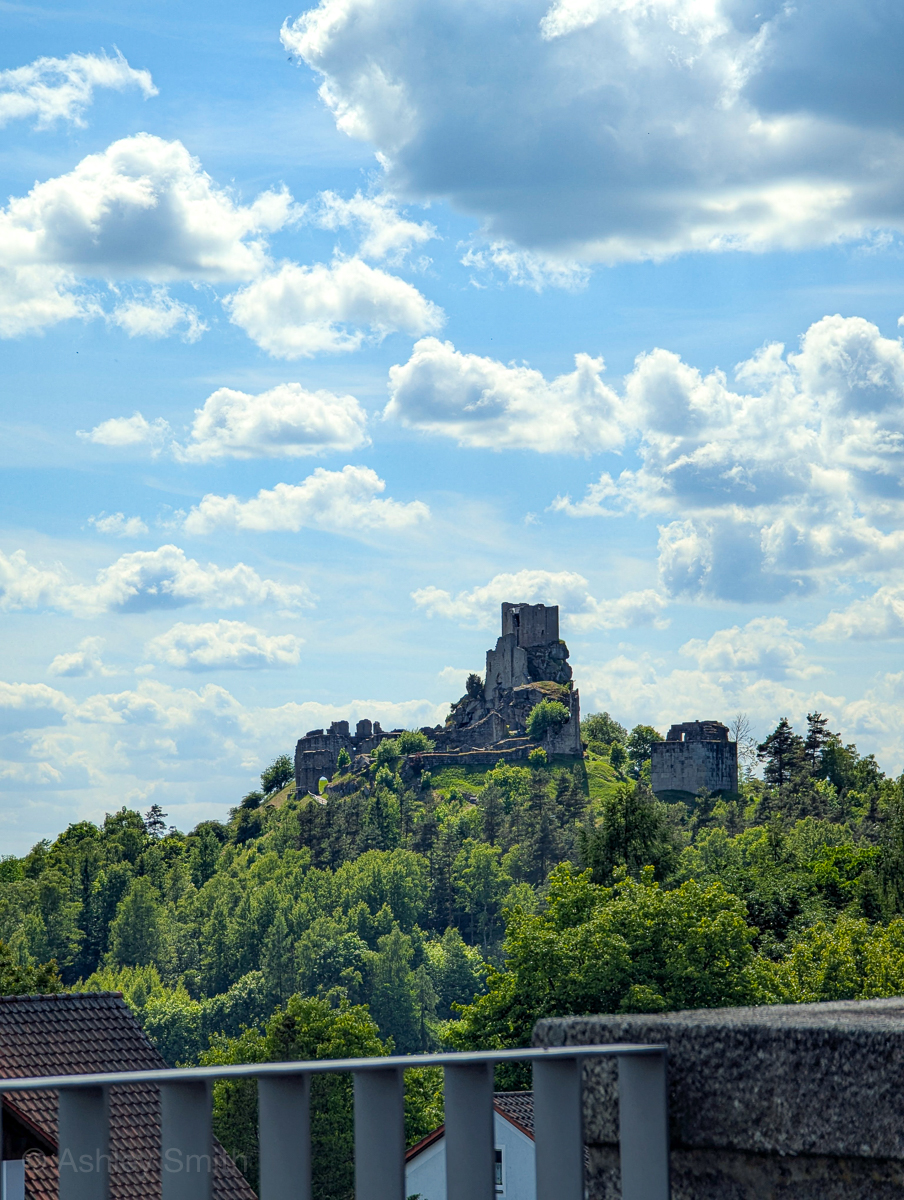
Where is Flossenbürg Concentration Camp?
The Flossenbürg Concentration Camp and Memorial Site is located in the town of Flossenbürg, Germany. It’s about halfway up Germany’s eastern border, just a couple miles from the Czech Republic.
How to get to Flossenbürg
Seeing as how Flossenbürg isn’t close to any major city, it’s maybe not the most accessible site to visit, but don’t let that dissuade you. It’s still quite easy to get to. The easiest way to get here is by car, but you can certainly take public transportation as well.
Driving is obviously the best option. (You can rent a car here if you need to.) When I visited Flossenbürg in May 2025, I drove from Prague and then continued on to Bamberg after my visit.
GPS address: KZ-Gedenkstätte Flossenbürg, Gedächtnisallee 5, 92696 Flossenbürg, Germany
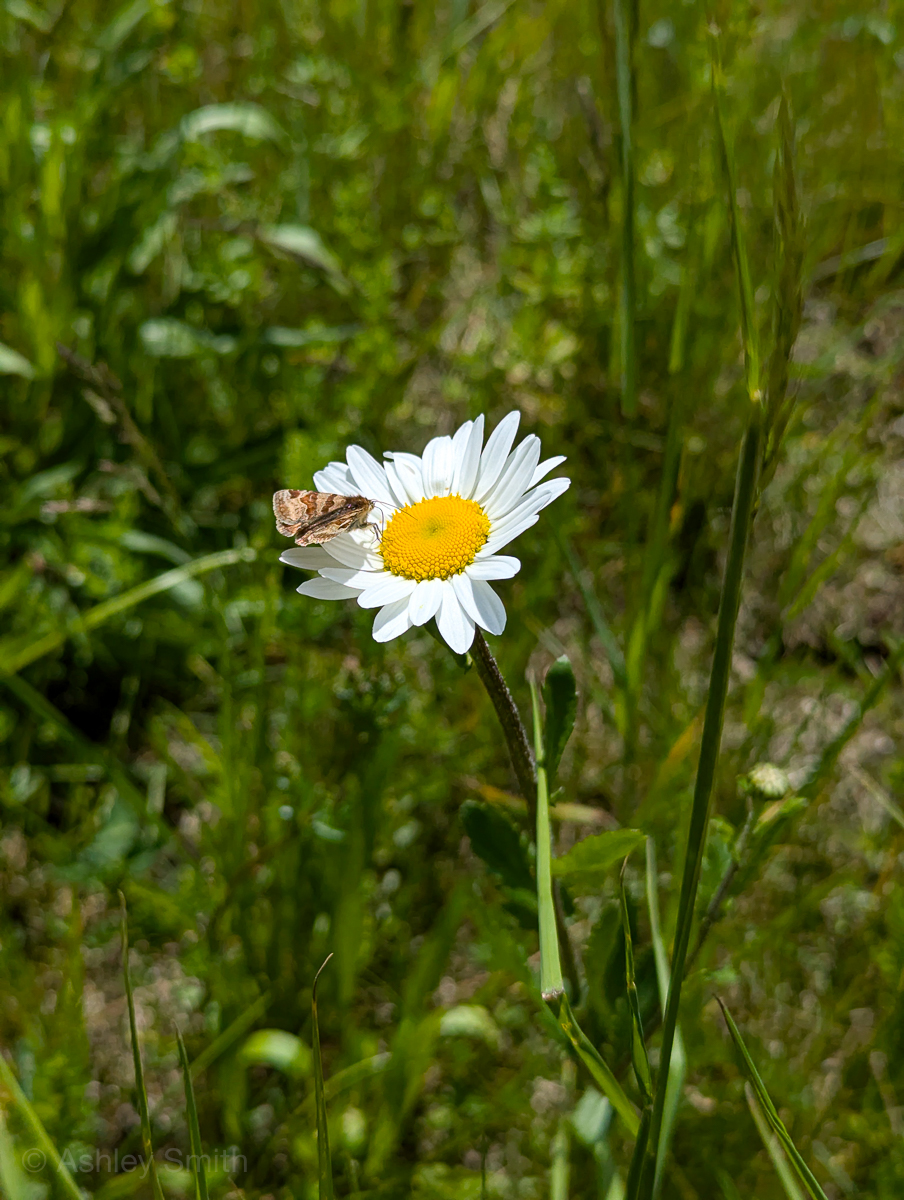
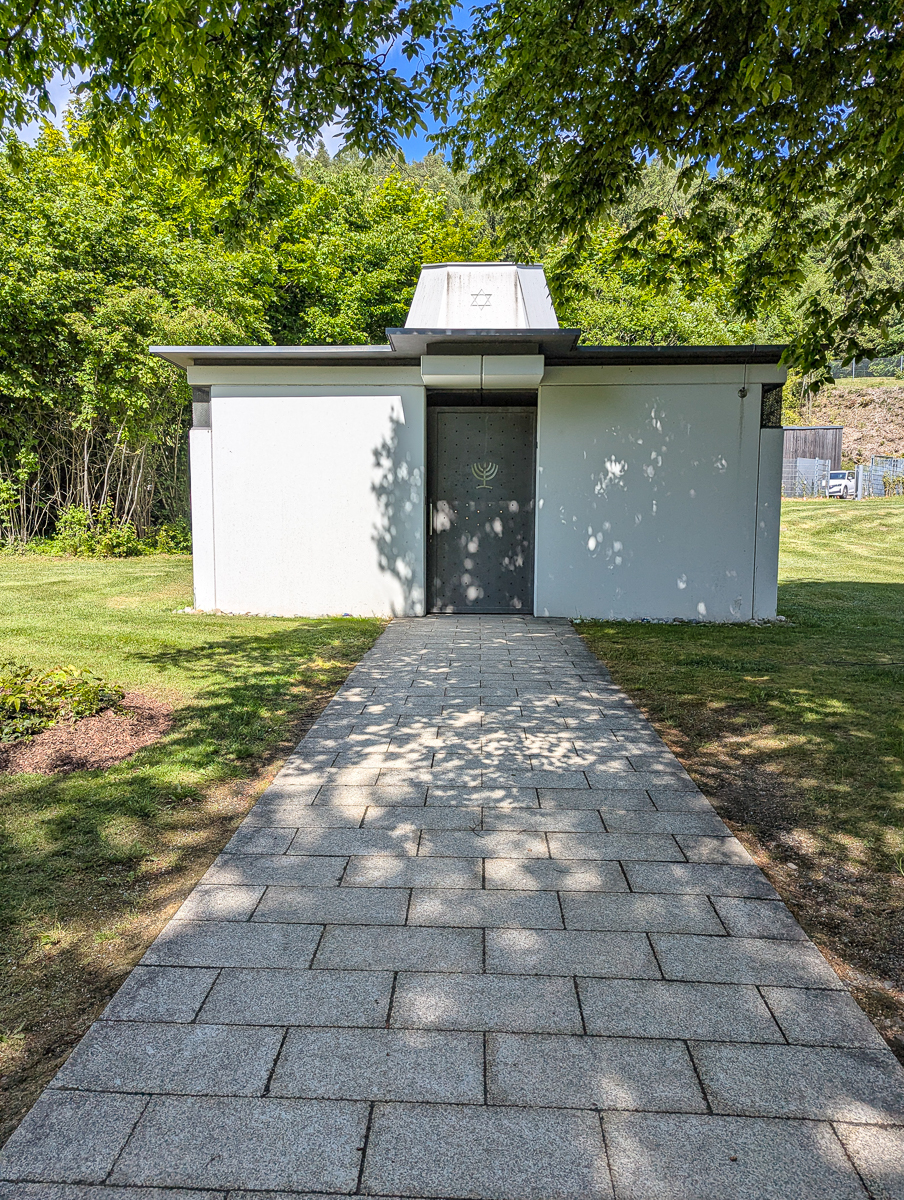
How to take the train to Flossenbürg
If you’d prefer to travel by train, you can take the train into any of these three Flossenbürg stations:
- Weiden (Oberpflaz)
- Altenstadt an der Waldnaab
- Neustadt an der Waldnaab
From here, you’ll need to take a bus to the memorial site. You can take either the 6272 or 1952 bus lines (Weiden – Flossenbürg/Silberhütte). The bus from the train stations will take an extra 40 – 55 minutes. (Like I said, driving is best!)
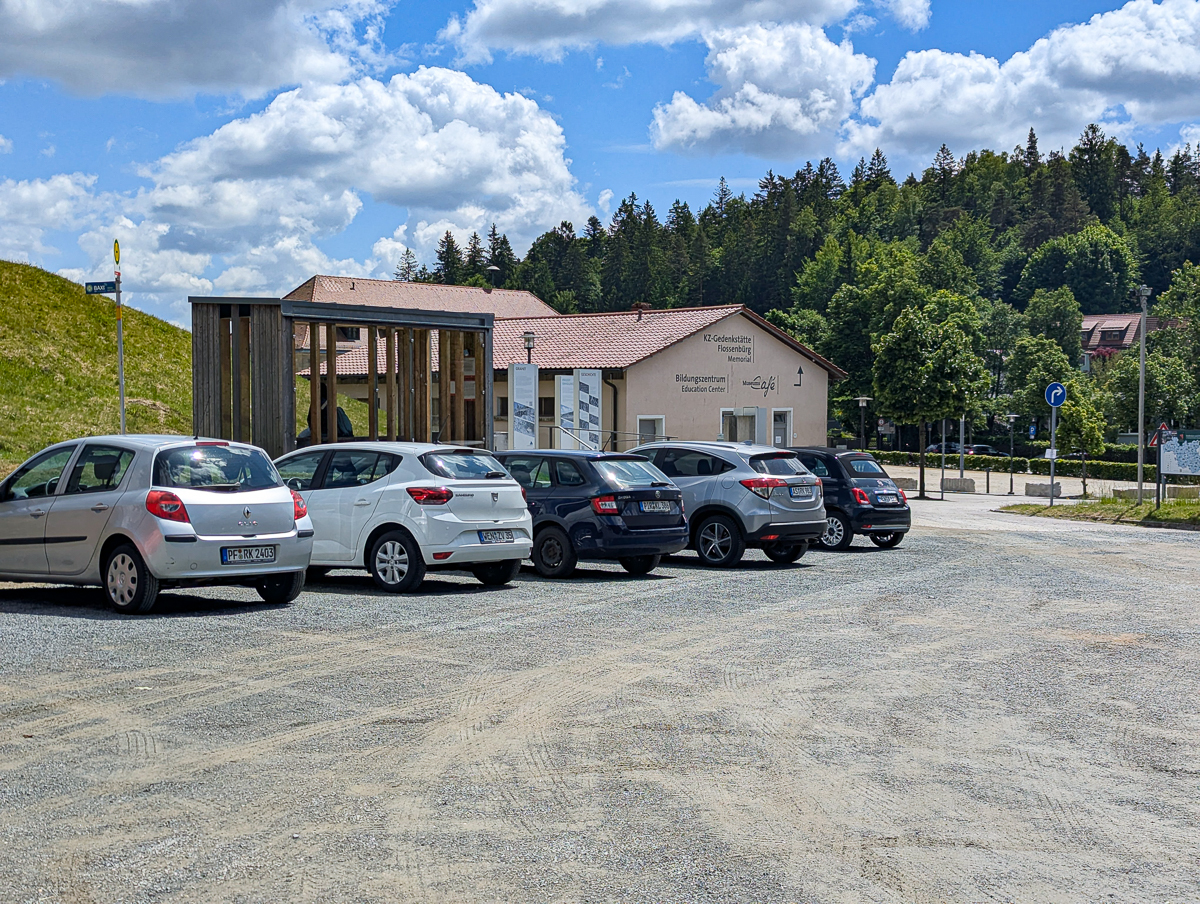
Where to Park at Flossenbürg
Once here, you’ll find a large gravel parking lot near the entrance. Parking is free and there are even charging stations for electric cars.
Tours to Flossenbürg
Unfortunately, no tour companies currently offer any roundtrip tours to Flossenbürg Concentration Camp from any of the surrounding cities. There are guided tours you can take advantage of once you arrive, but getting here (and back) is fully up to you.
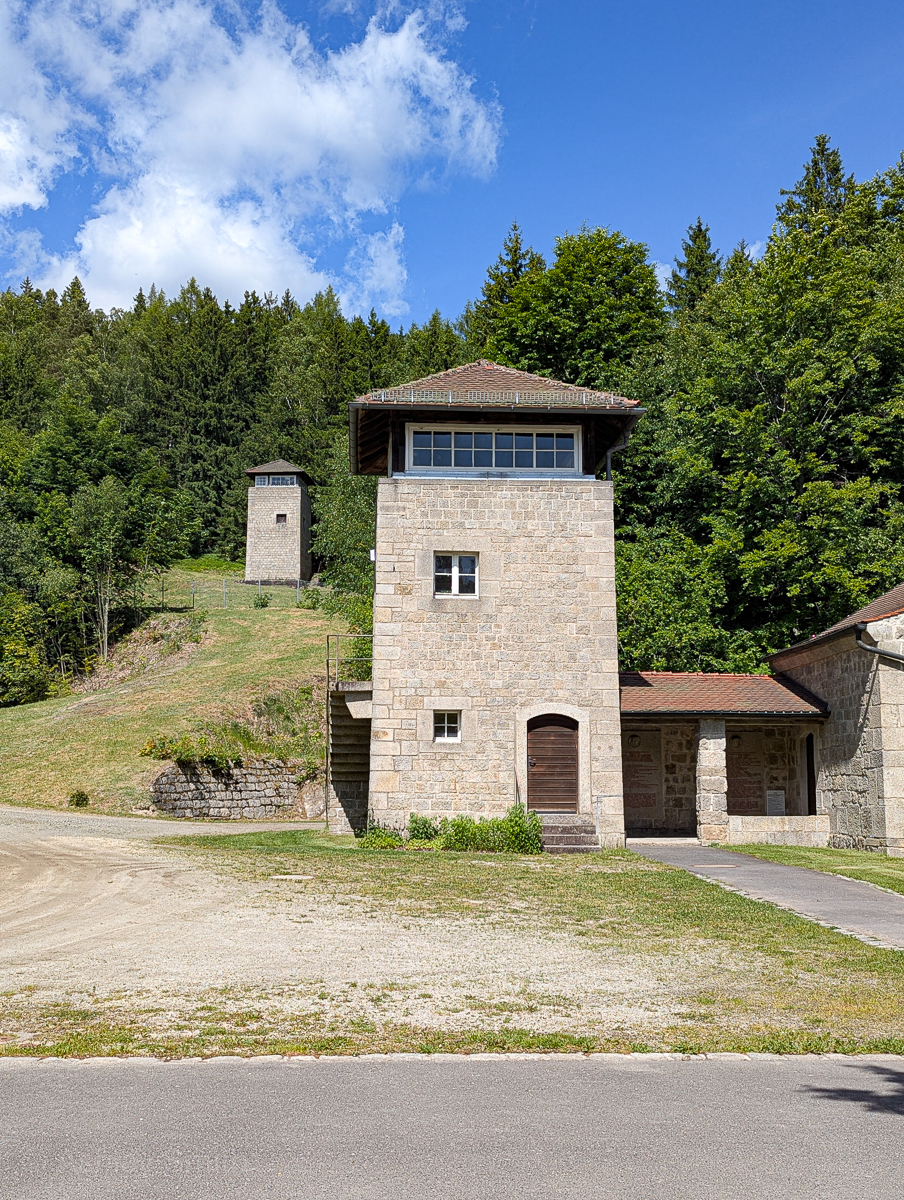
What to see at Flossenbürg Concentration Camp
Though much of the camp was developed for other uses after the war, there’s still a great deal to see here. You’ll find original camp structures, museum exhibits, memorial spaces, the crematorium, burial grounds, and more. (Which I describe in more detail below.) There’s also a restaurant/café on site.
Flossenbürg Museum
Two of the original camp buildings still stand today and have been converted to house modern museum exhibitions. Inside the former camp laundry building is the exhibit titled “Flossenbürg Concentration Camp 1938-1945.” Using archival photographs and several original artifacts, it details the entire history of the camp from establishment to liberation.
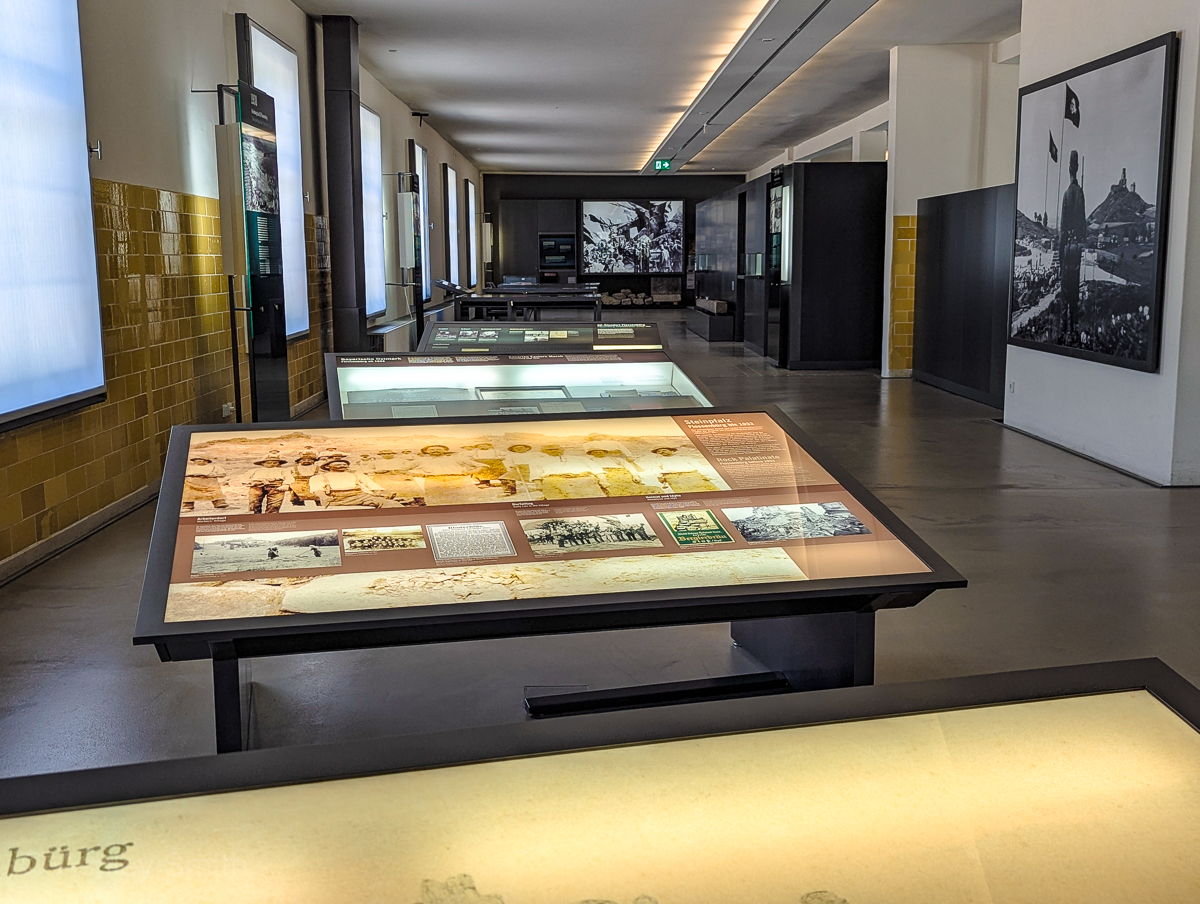
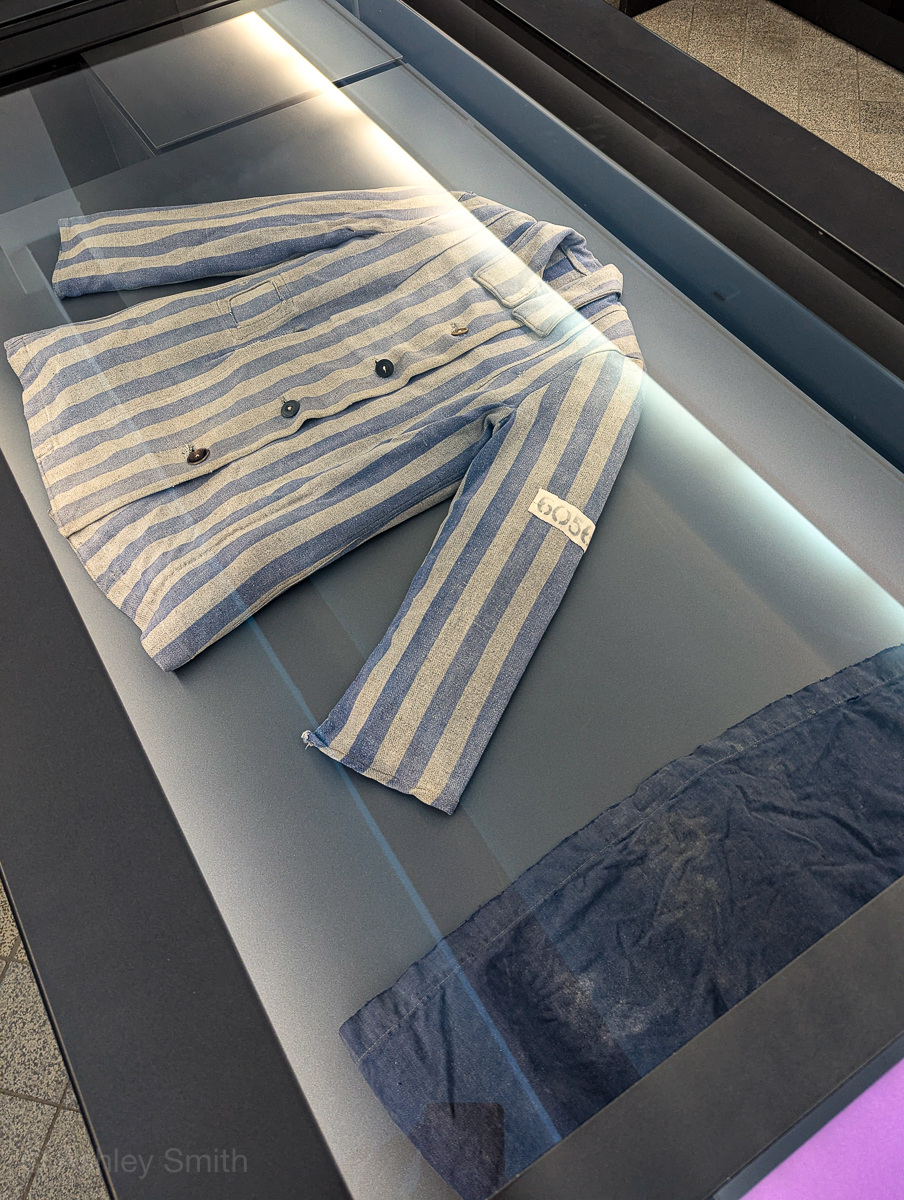
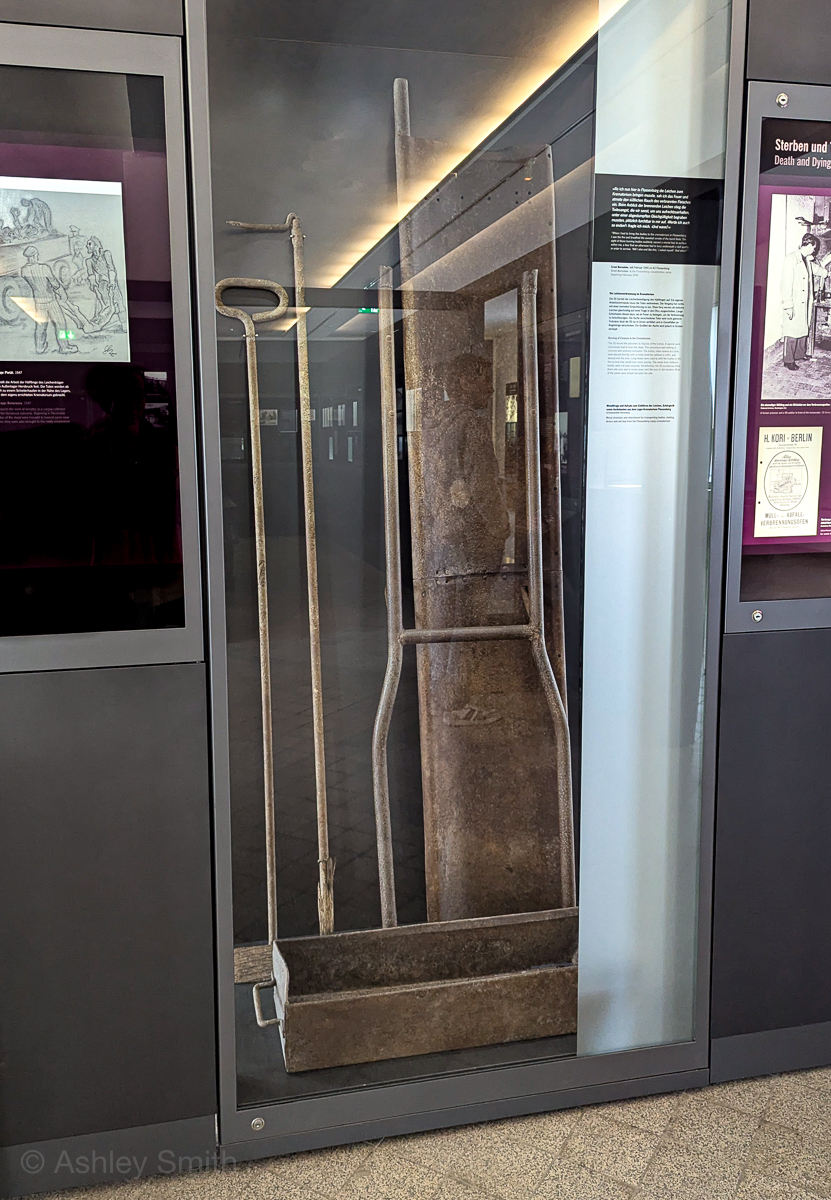
And inside the former camp’s kitchen building is the exhibition titled “What Remains.” This exhibit focuses on the post-war life of the camp, its survivors, and things like the post-war Nazi trials (a topic I’m especially interested in).
I found both exhibitions to be incredibly well-done and I especially loved the “What Remains” exhibit. Of all the concentration camps I have visited, this is the first one I’ve seen that’s dedicated so much attention to the lives of the camp’s survivors in the decades following the war. I found it so interesting to see how many different ways they’ve coped with their experiences here. (Like using their prisoner number as their license plate!) This exhibit was definitely a highlight for me.
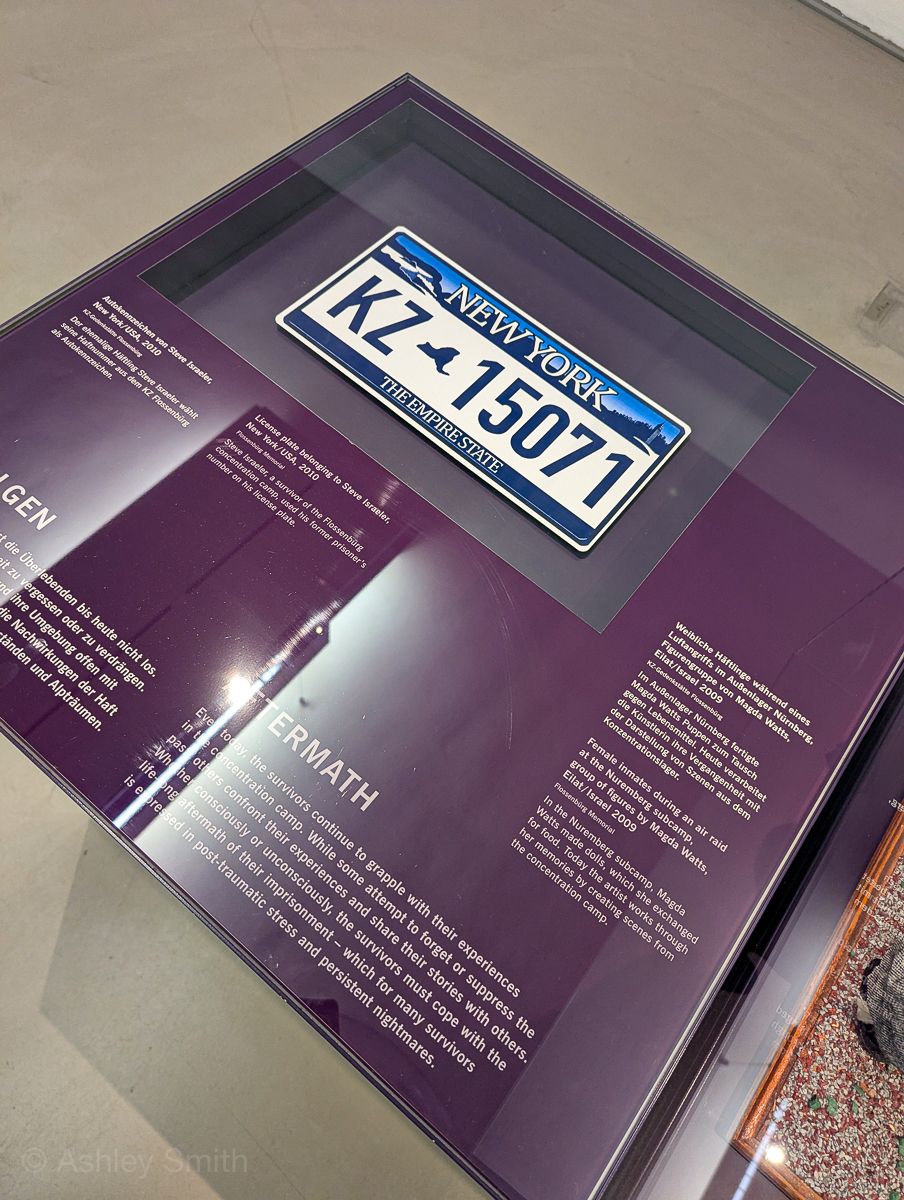
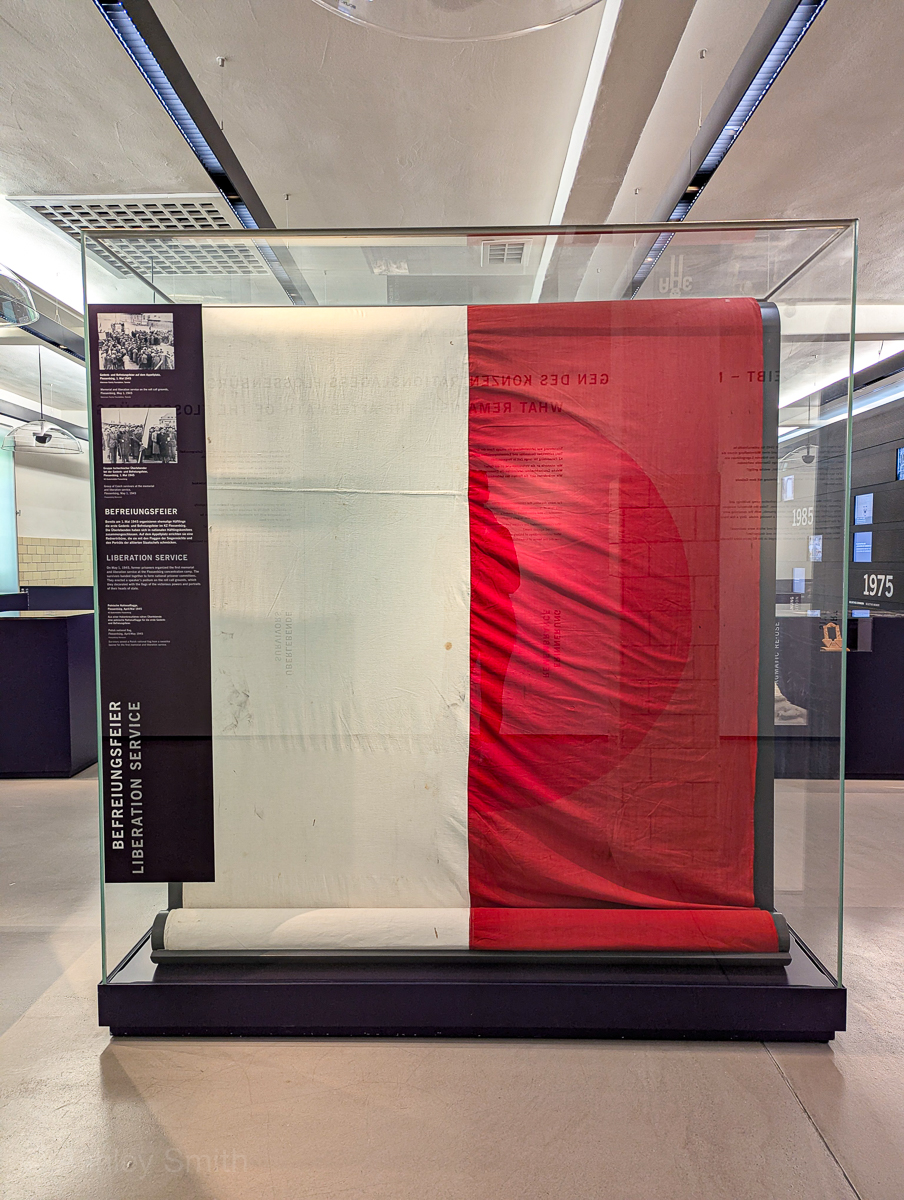
Original Camp Structures
The museum exhibitions above are located in two of the camp’s original structures—the kitchen and the laundry building—but those aren’t the only two you can visit. In addition to the ones mentioned below, you can also see the foundations of several prisoners barracks and other buildings as well as a few original guard towers.
Commandant Headquarters
At the entrance you’ll see a large imposing building. During the camp’s operation this served as the Commandant’s headquarters and SS administrative offices. Since this building is used today as the official Flossenbürg Concentration Camp Memorial offices and library, you can’t go inside but there’s still plenty of information about it on the outside.
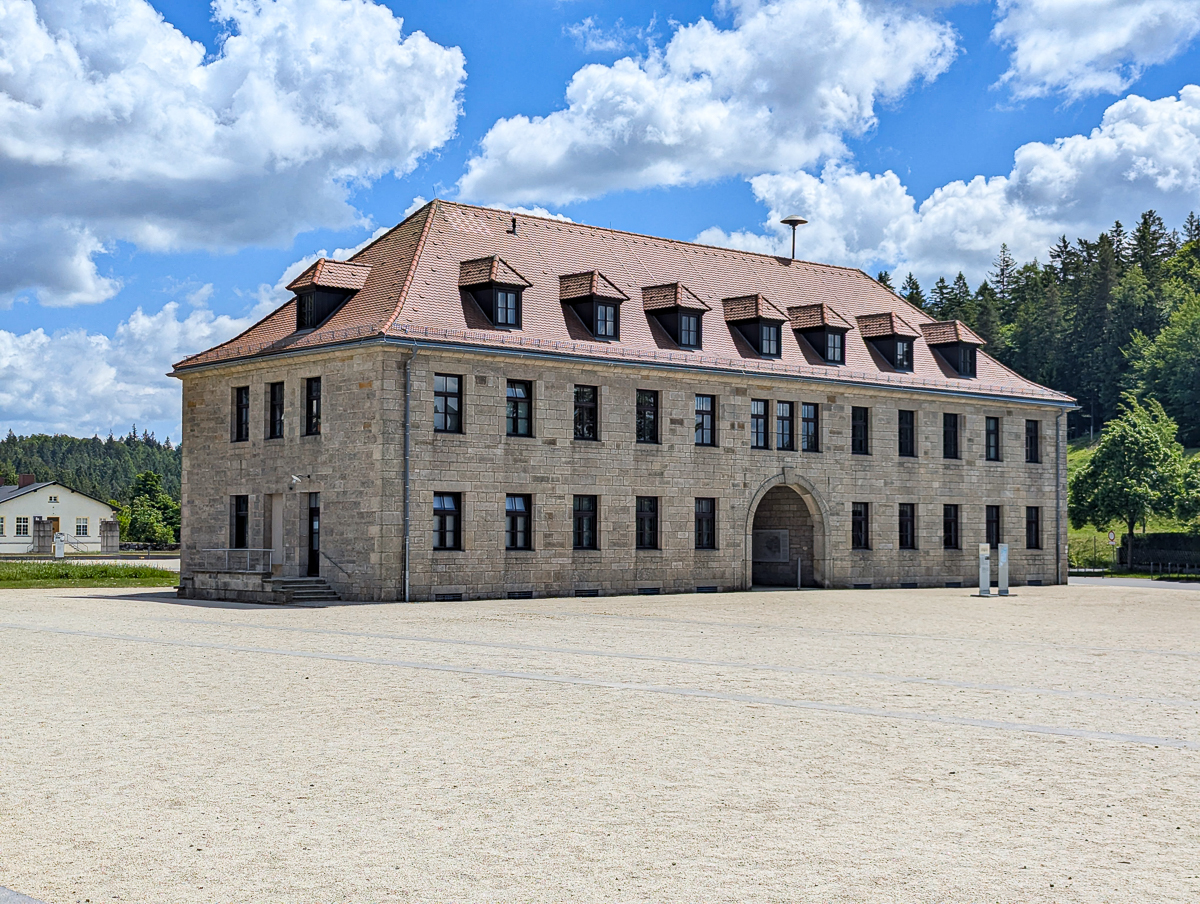
SS Canteen
The large building on the left side of the entrance is the former SS canteen. It housed a kitchen, dining hall, and restaurant primarily for the SS guards. It’s still used as the site’s café today as well as the education center and meeting rooms.
Crematorium
At the back of the memorial site, in the area known as the “Valley of Death,” you can visit the original crematorium. Inside, you’ll also see the “autopsy” room where SS guards would remove gold teeth and search the bodies for other valuables before burning them. Up the hill behind the crematorium you can see the original ramp. As the number of dead bodies drastically increased, this ramp acted as a literal chute down into the crematorium.
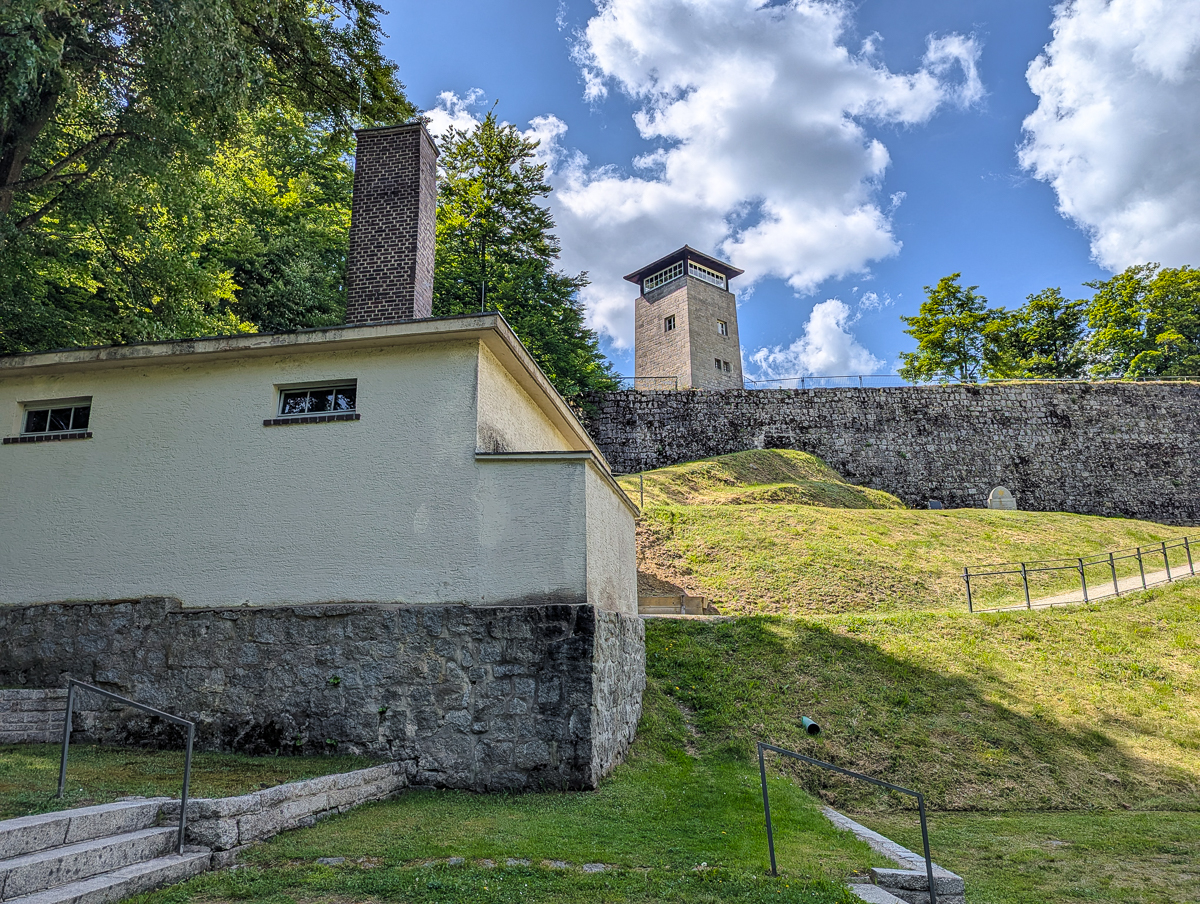
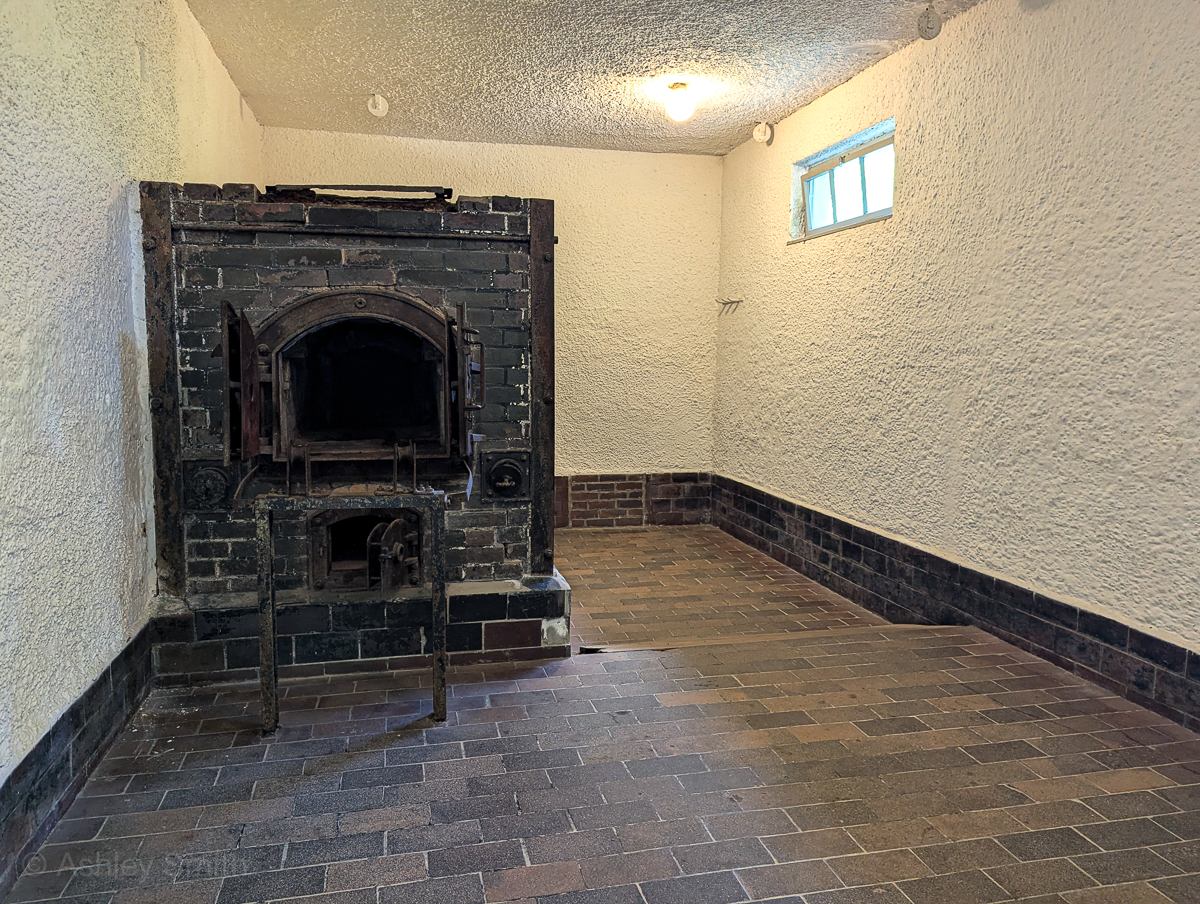
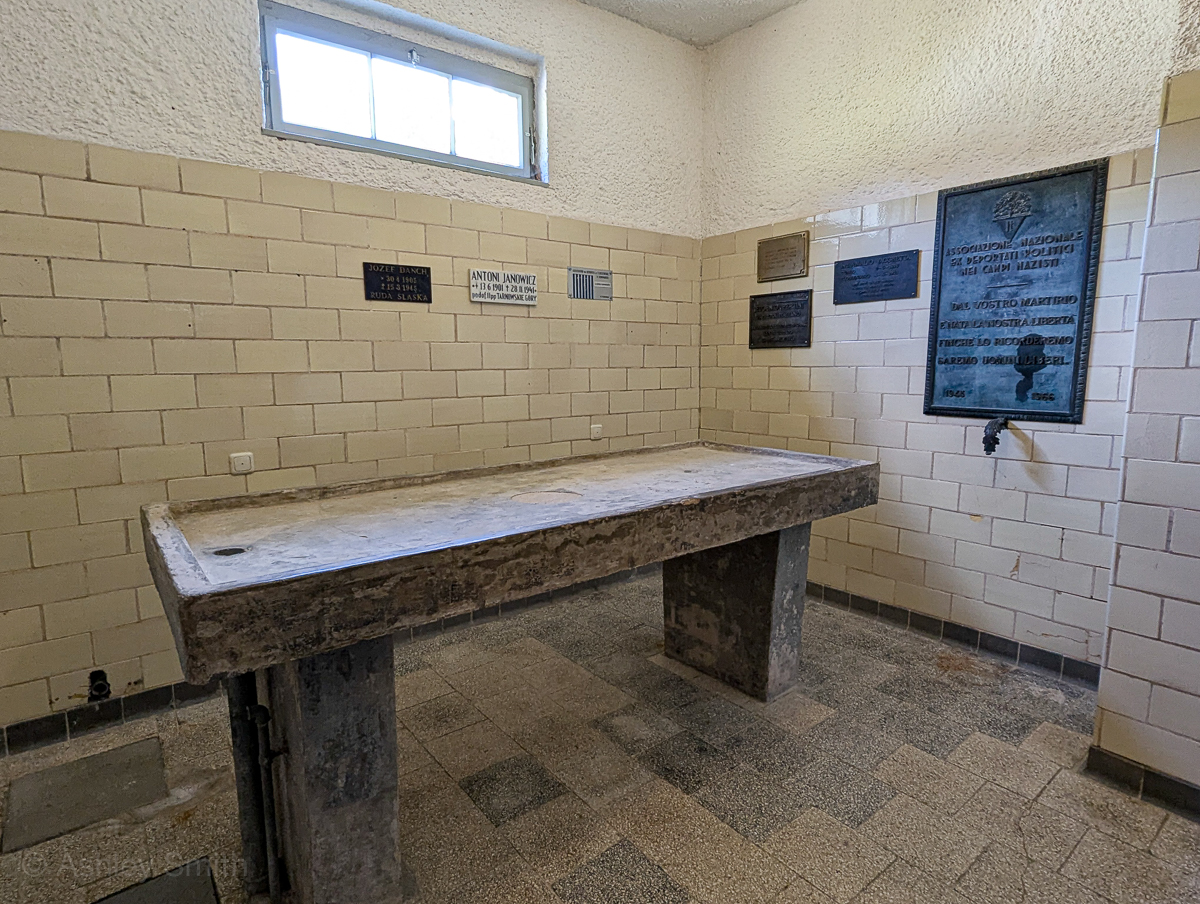
Flossenbürg Memorials
There are several memorial spaces scattered around the former camp site as well. In the area at the back of the site known as the “Valley of Death,” you’ll find:
- Jewish Memorial – See this article for more on Flossenbürg’s Jewish memorials
- Catholic Chapel – Built with stones from some of the demolished guard towers
- Pyramid of Ashes – A large mound containing the ashes of thousands of prisoners
- Square of Nations – A collection of memorials honoring each of the countries from which the camp’s victims originated
- Cemetery of Honor – Contains the graves of more than 5,500 dead
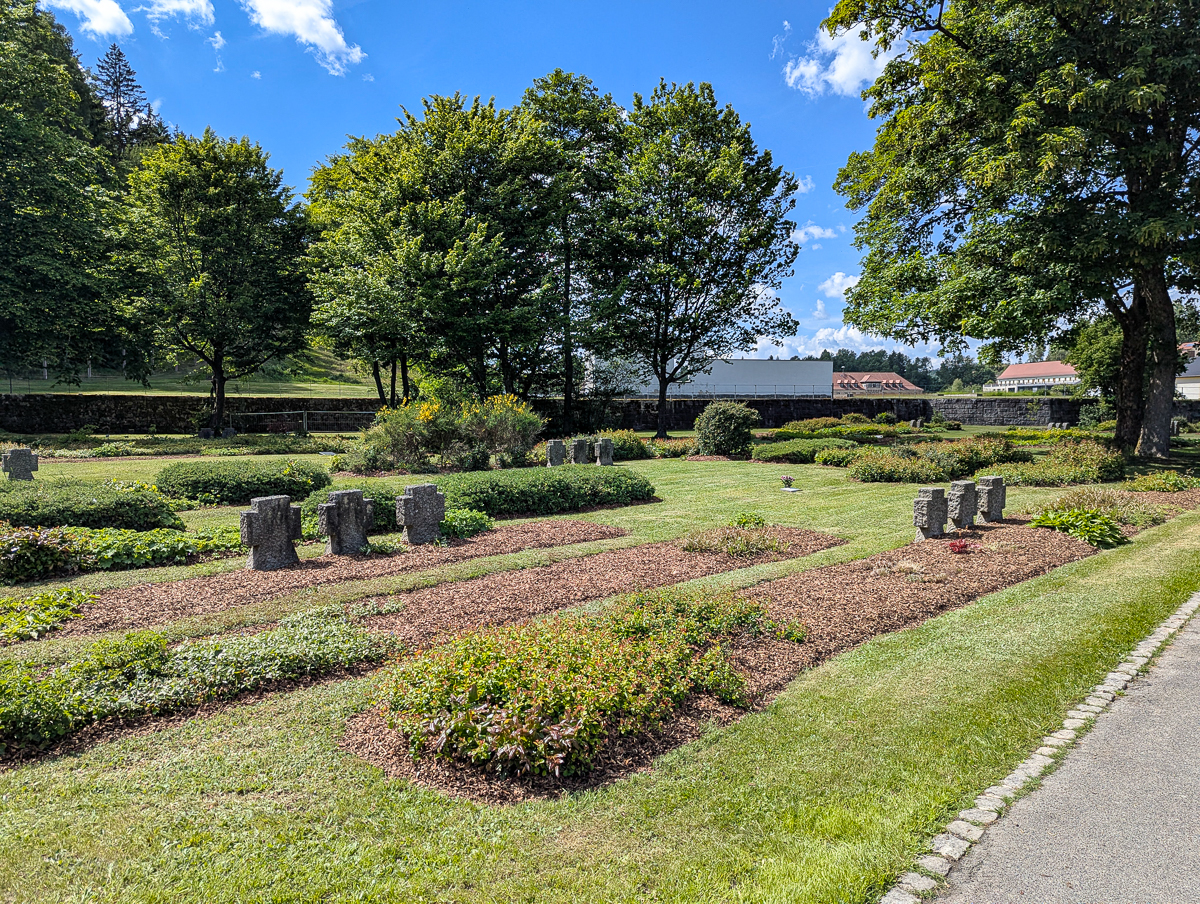
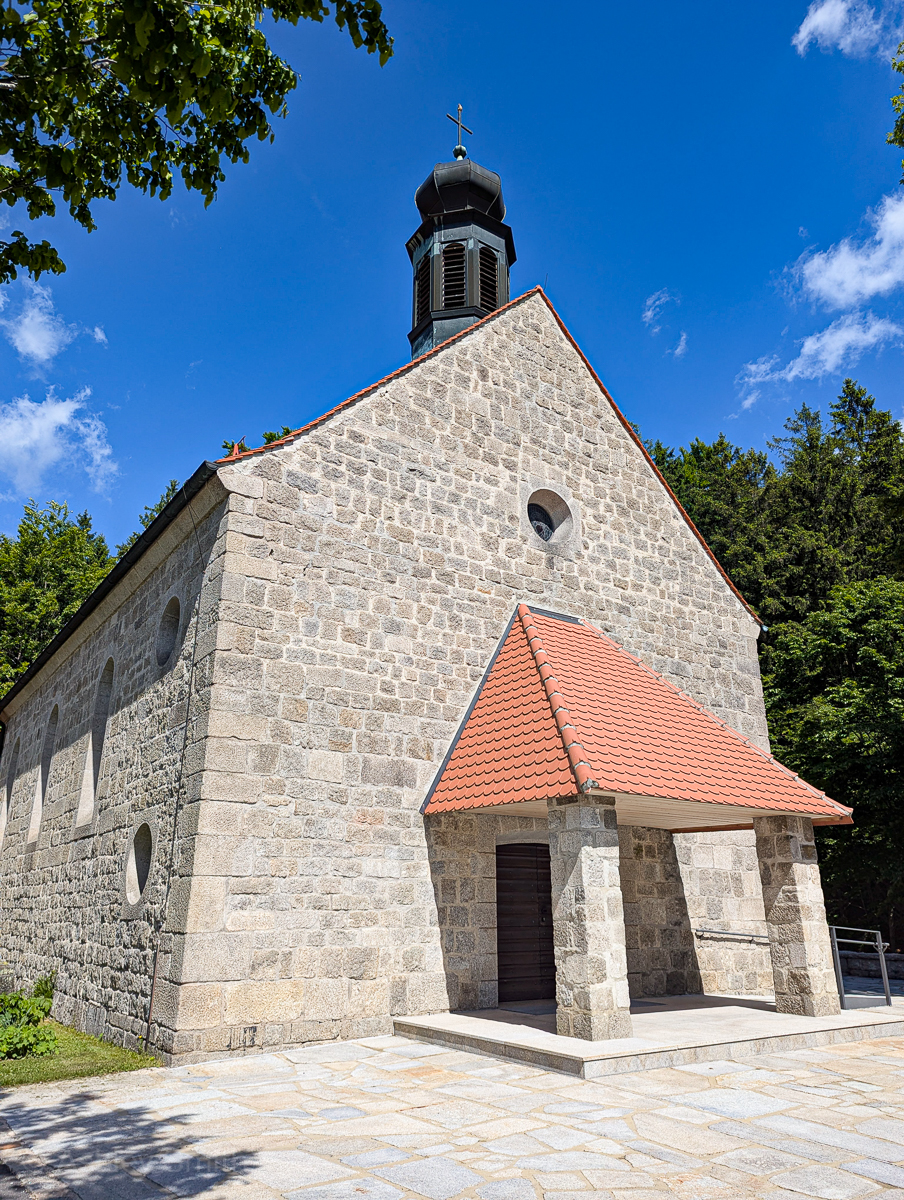
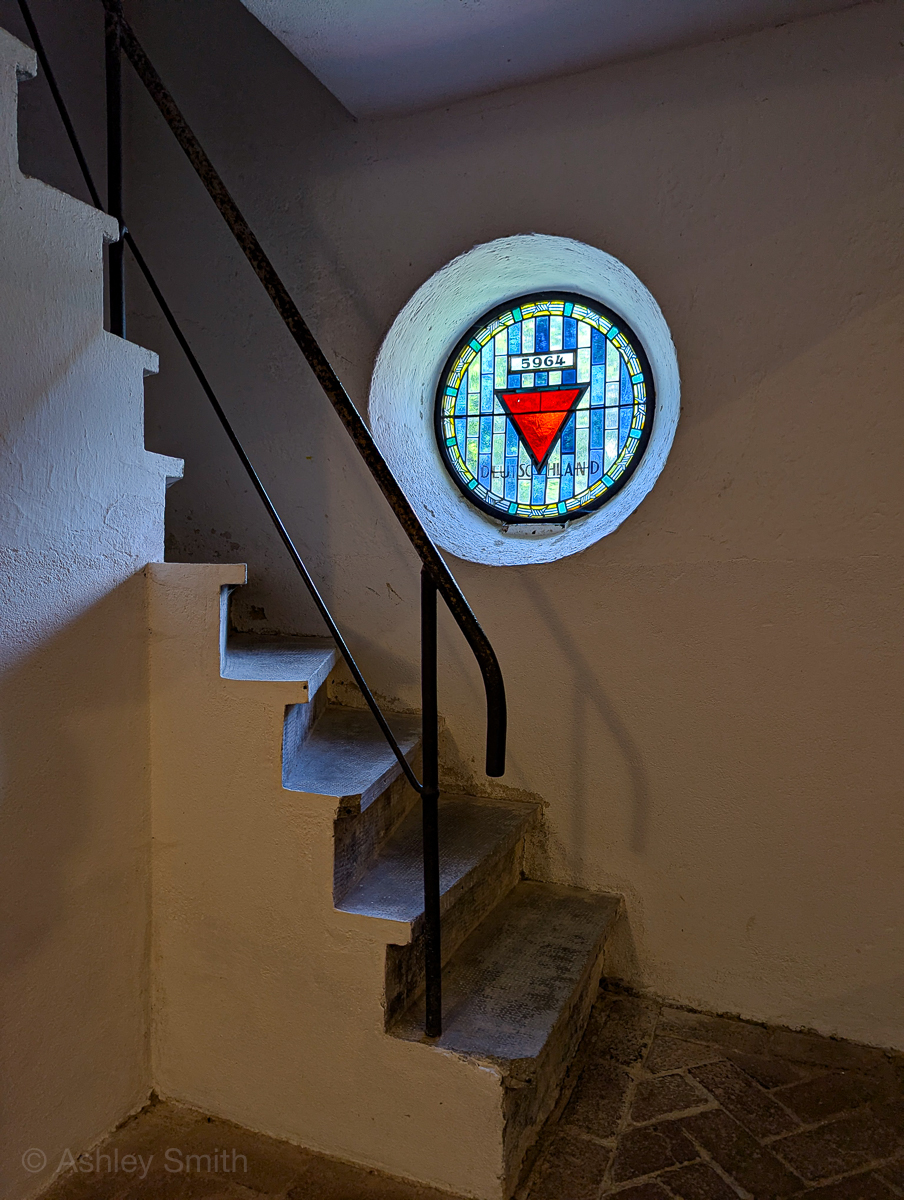
Restaurant and Café
The original SS canteen now functions as a small restaurant/café and education center. I ate here during my visit because I still had a couple more hours of driving to do and because there wasn’t anywhere else open to eat in town. And let me tell you, the experience of eating here was not a comfortable one.
I’ve eaten at other camps before; Dachau has a decent café on site, for example. But at Dachau, you’re in a new building that’s outside the bounds of the camp. The same goes for the restaurant at Mauthausen. But here at Flossenbürg, you’re eating in the original SS restaurant. Not only that, you’re sitting on a patio overlooking the camp’s roll call square and Commandant headquarters.
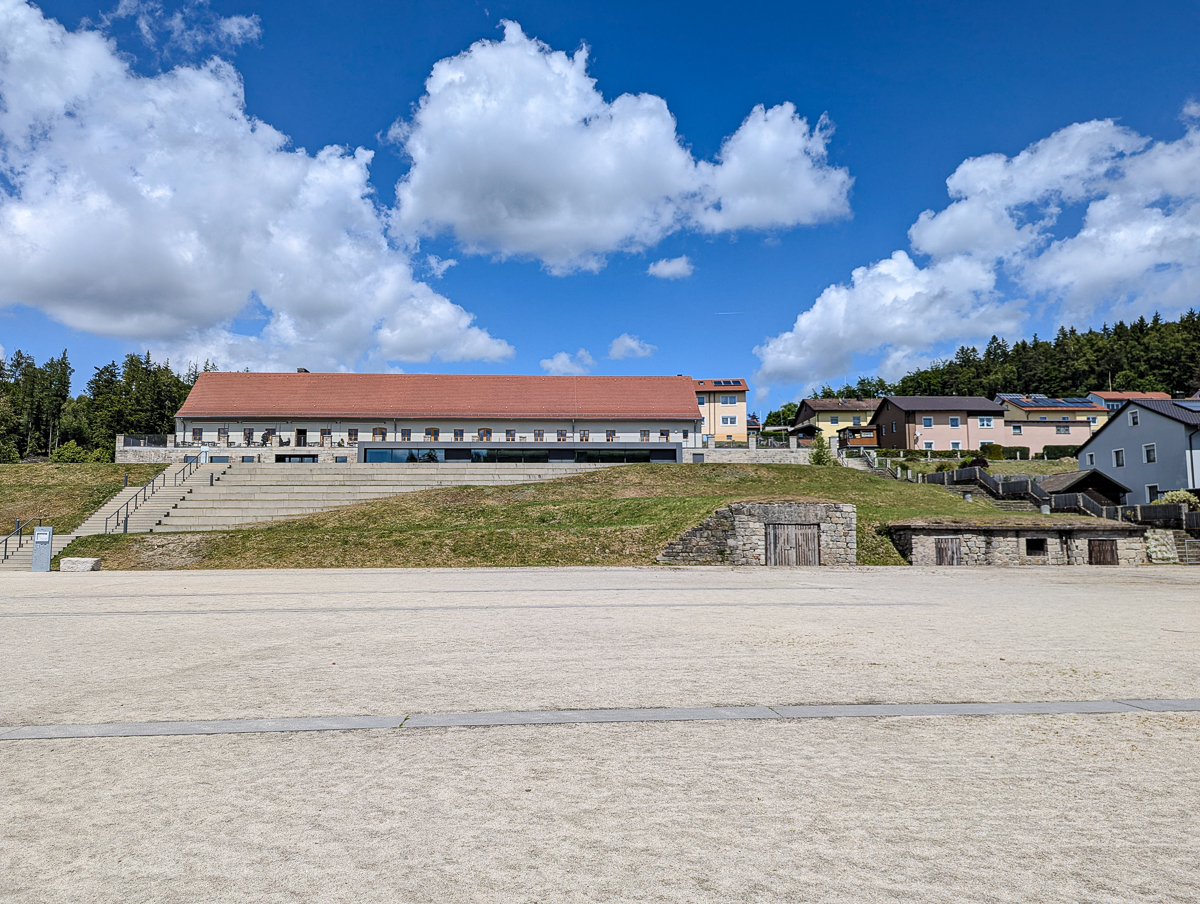
You’re seeing it all from up on high the way the SS guards saw it. All I could picture were the scenes from Schindler’s List where Amon Goeth is shooting prisoners at will from his balcony. It probably won’t be a delightful lunch for you, but if you need to eat, it’s here. (And for what it’s worth, the food and service are both great.)
Oddly enough, the café and patio were pretty packed at one point. I think this is just where people who live nearby come to eat lunch. It’s seems weird to me, but I guess when you live up against a concentration camp it’s just something you come to terms with pretty quickly.
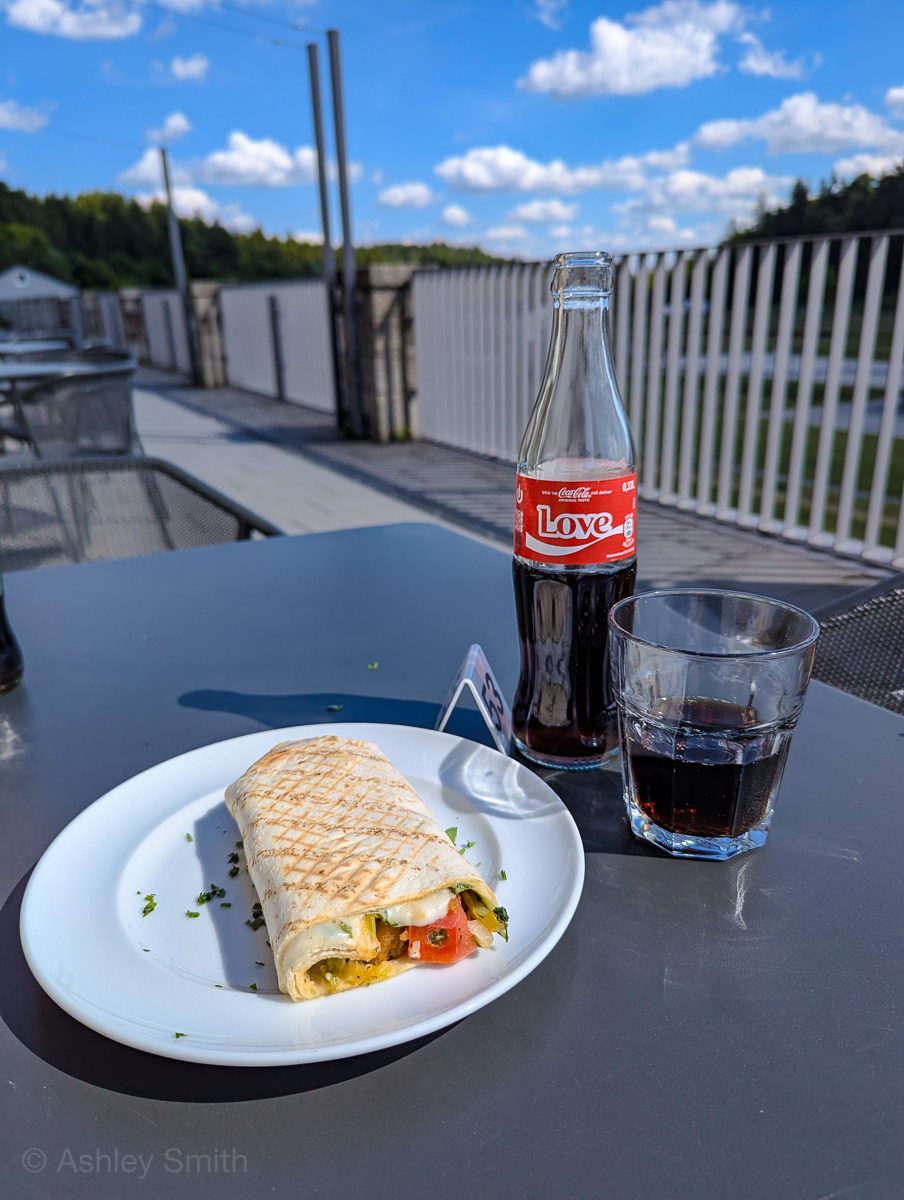
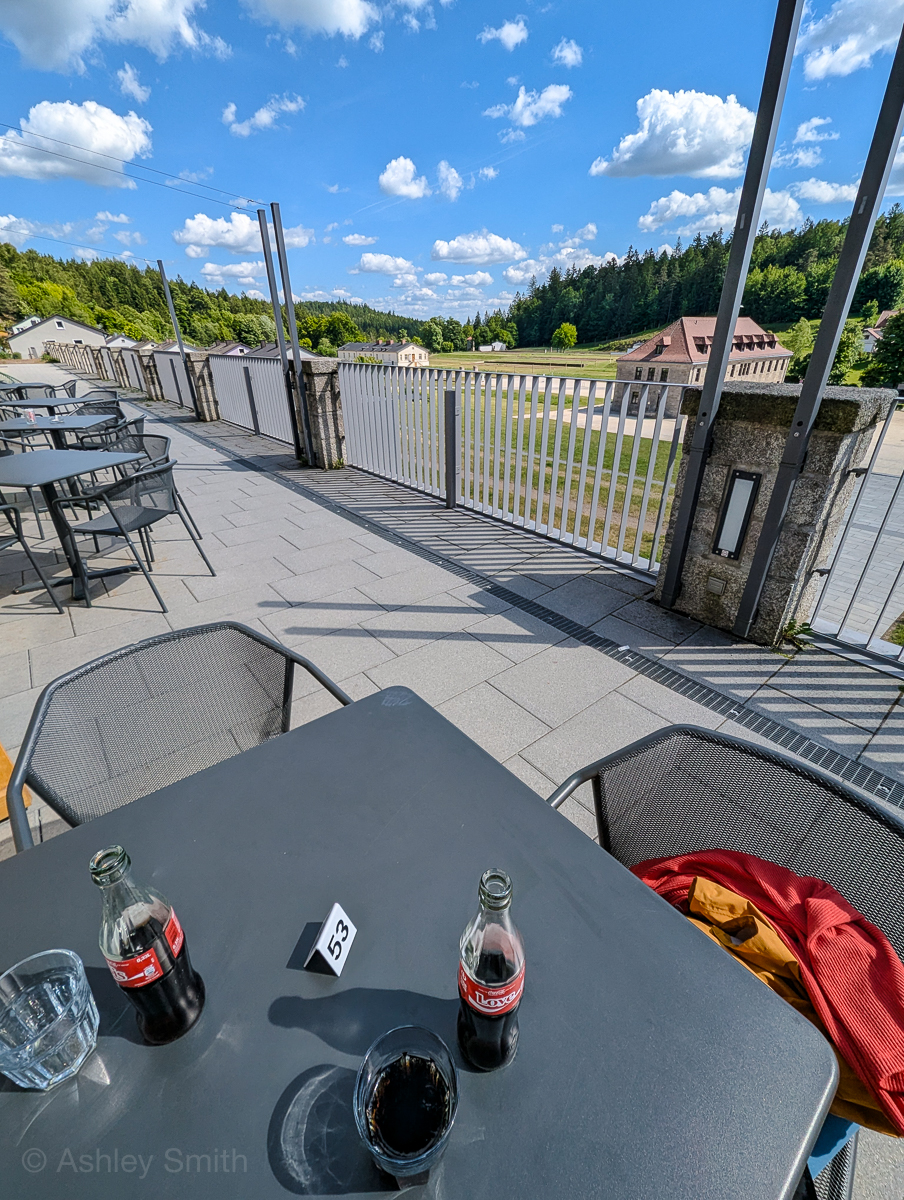
Visiting Flossenbürg: What to Expect
After parking at Flossenbürg, you’ll first encounter a few informative signs near the building at the entrance. You can also pick up a map here. Upon entering the camp, you’ll first see the SS canteen (restaurant) to your left up the big staircase and the Commandant’s headquarters in front of you.
There is no official “entrance” or anywhere you need to check in. You’re simply free to visit the site as you wish. There are informative panels at each of the many visitor locations around the camp in both English and German. The map you picked up near the parking lot is easy to follow.
Inside the laundry building with the main museum exhibit, there’s an information counter where you’ll find someone who can answer questions, etc. From here, walk across the large square to the former kitchen building for the next exhibition. Continue on past the kitchen building and you’ll enter the memorial space. Pass the Jewish memorial and the chapel and you’ll be able to walk down into the Valley of Death (Tal des Todes).
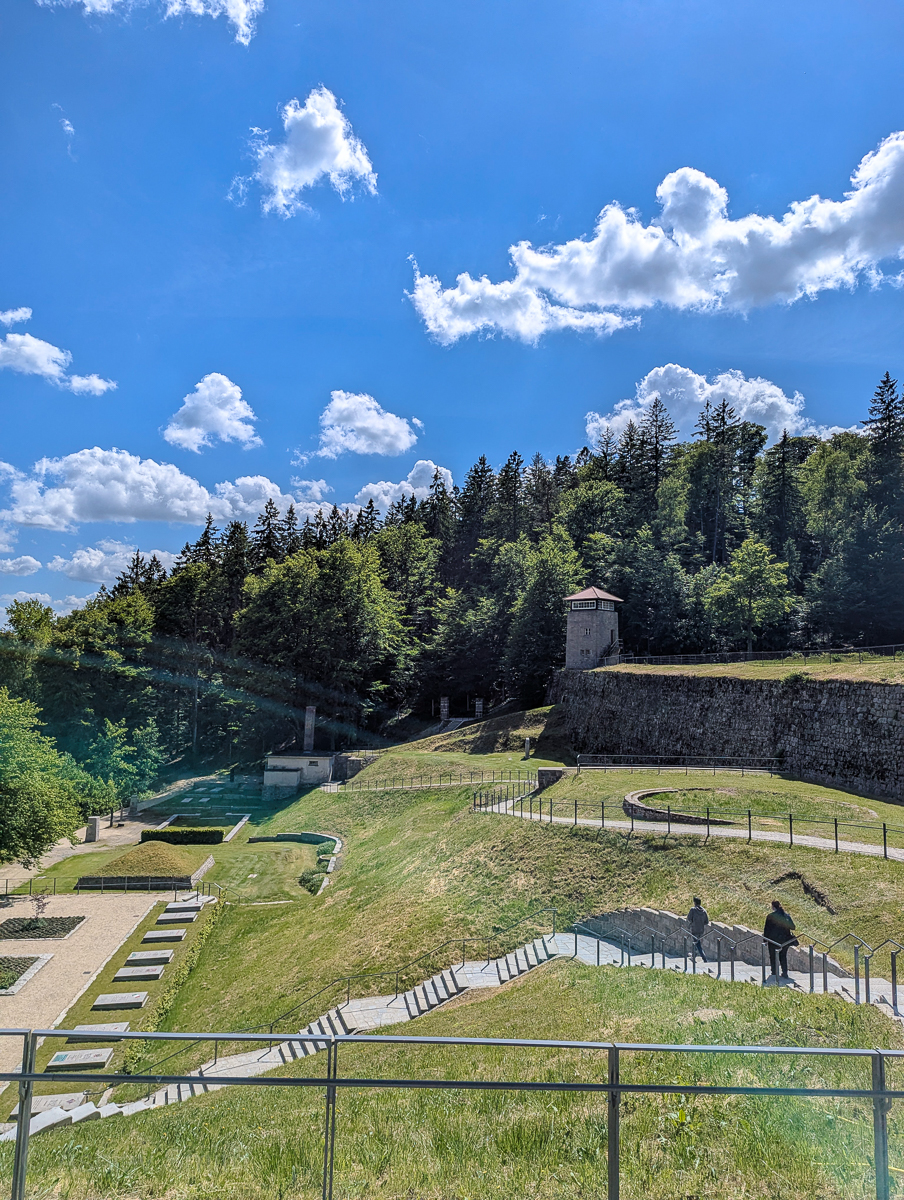
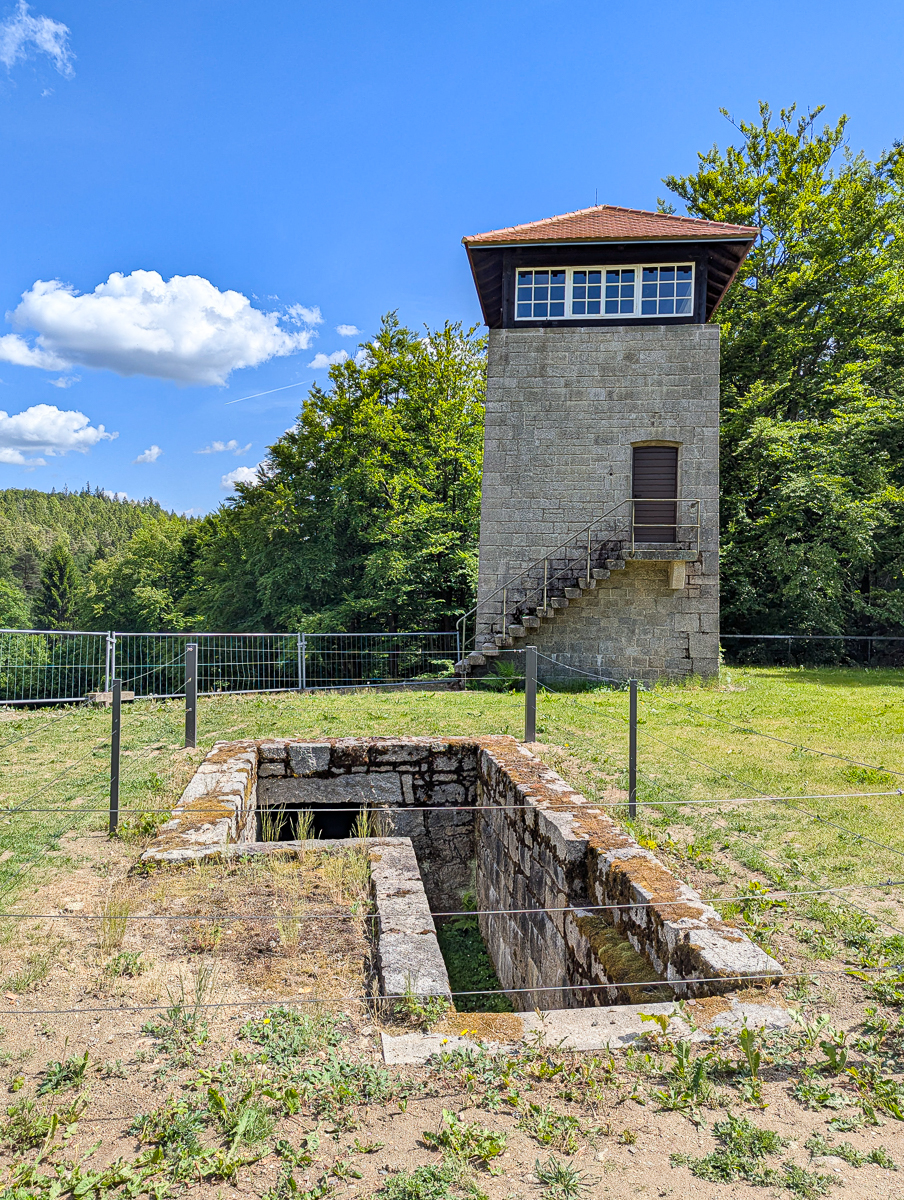
What You Need to Know for Visiting Flossenbürg
Even if you’ve visited other concentration camp memorial sites, Flossenbürg may still be a unique experience for you. Even so, here are a few things you should know before you go.
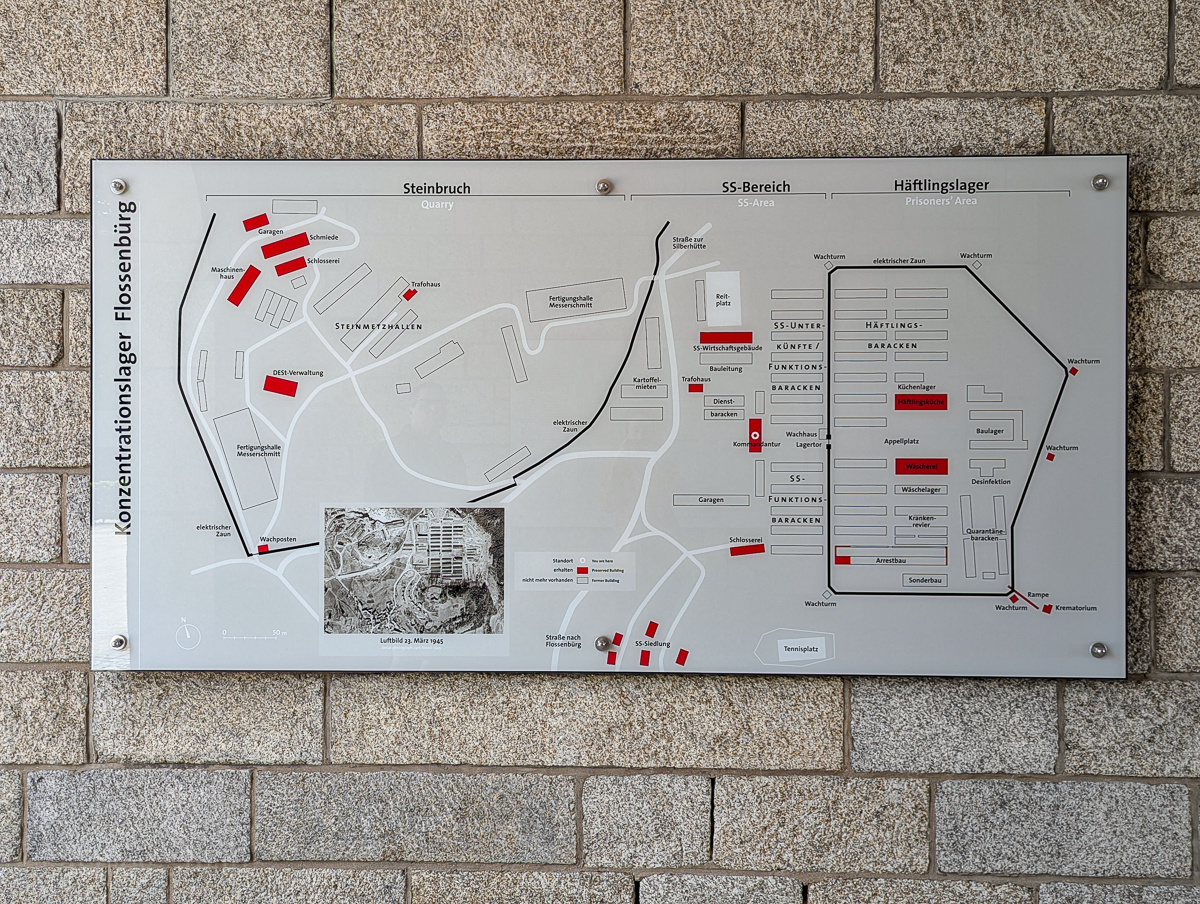
Visiting Flossenbürg: Essential Information
Here’s the most basic information you need to plan your trip to Flossenbürg Concentration Camp Memorial:
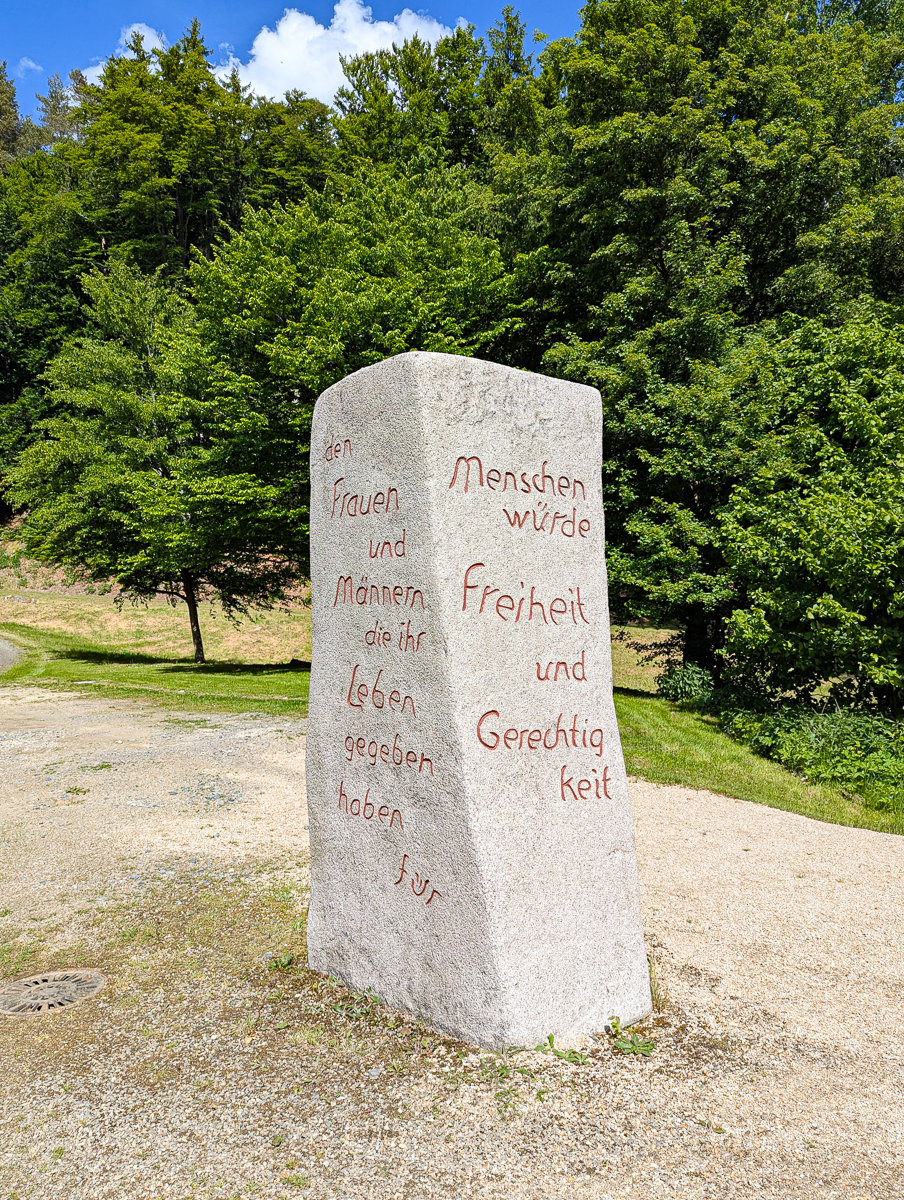
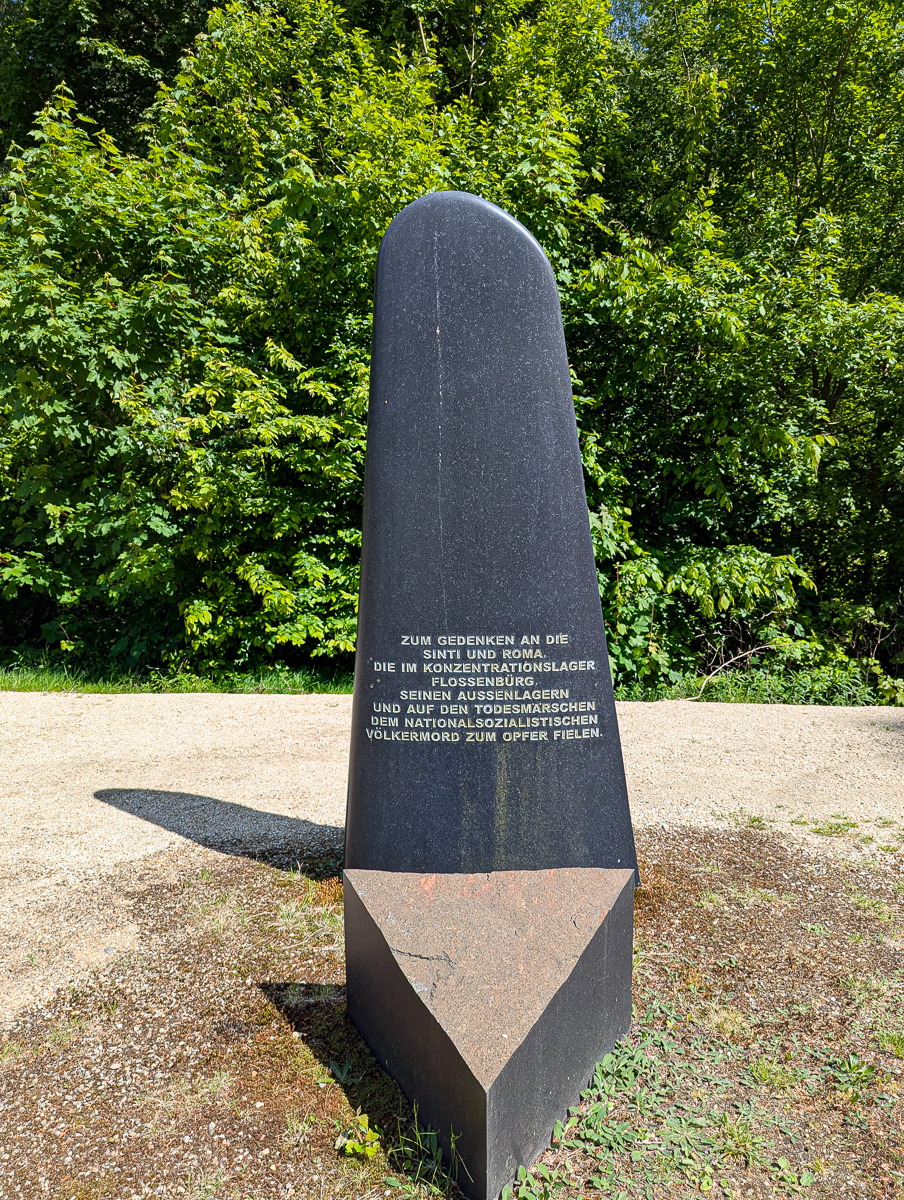
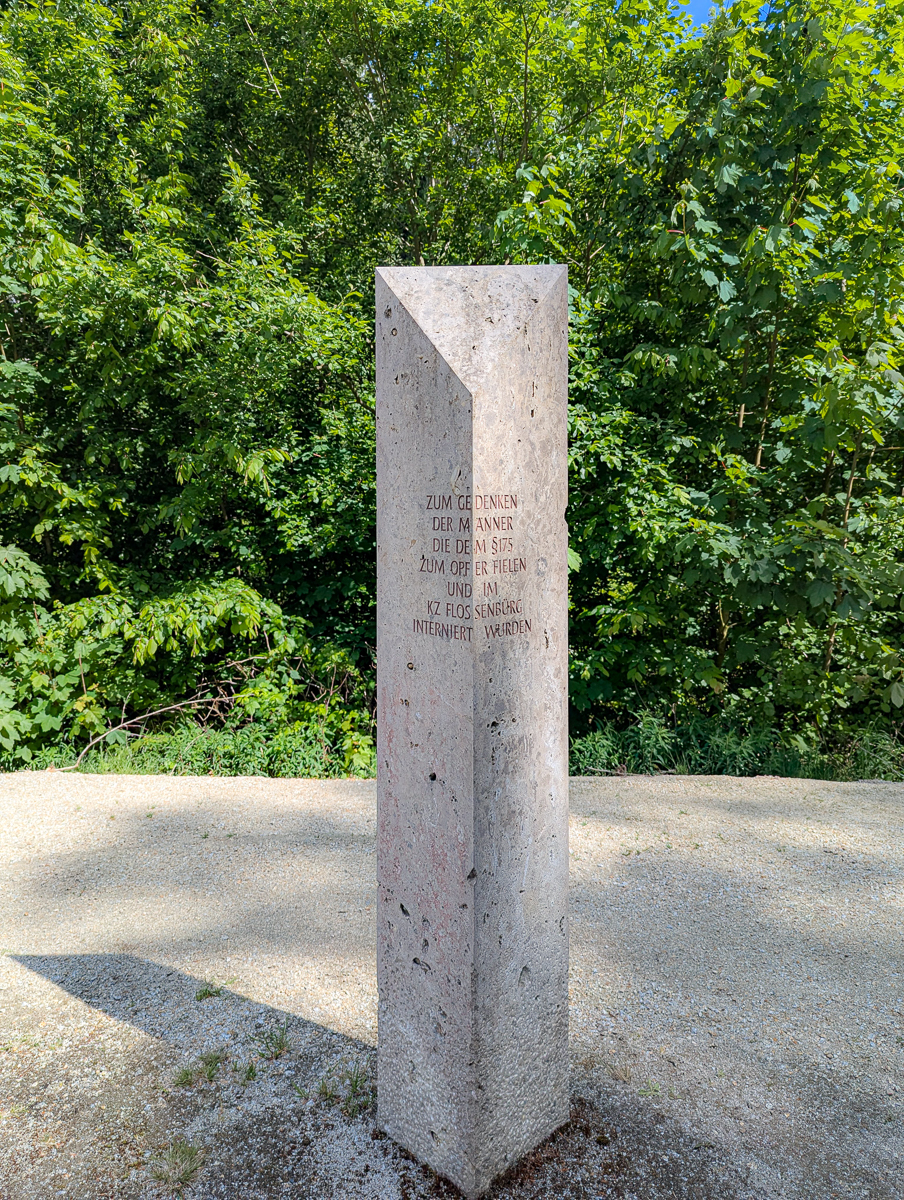
More info for your trip to Germany
- Hotels: Find great places to stay on Booking.com (my go-to). Expedia and Hotels.com are worth checking too. VRBO is best for apartment rentals.
- Rental cars: Check out the best rental car deals here.
- For great local tours, check out all the options from Viator and Get Your Guide.
- Don’t forget a Germany guidebook and this must-have Germany customs and culture guide!
- Want more? See all my Germany posts here.
Like this post? Have any questions about visiting Flossenbürg Concentration Camp? Let me know in the comments below. Thanks for reading.

Save this info, pin these images:
